

How To Virtually Tour of Paris’ Louvre & See Every Masterpiece
If you’re an art enthusiast, the Louvre is probably at the top of your Paris or museum wish list.
As the world’s largest and most visited museum, it boasts an impressive collection of 35,000 artworks, ranging from the 6th century BC to the 19th century AD, all housed within a magnificent Renaissance palace.
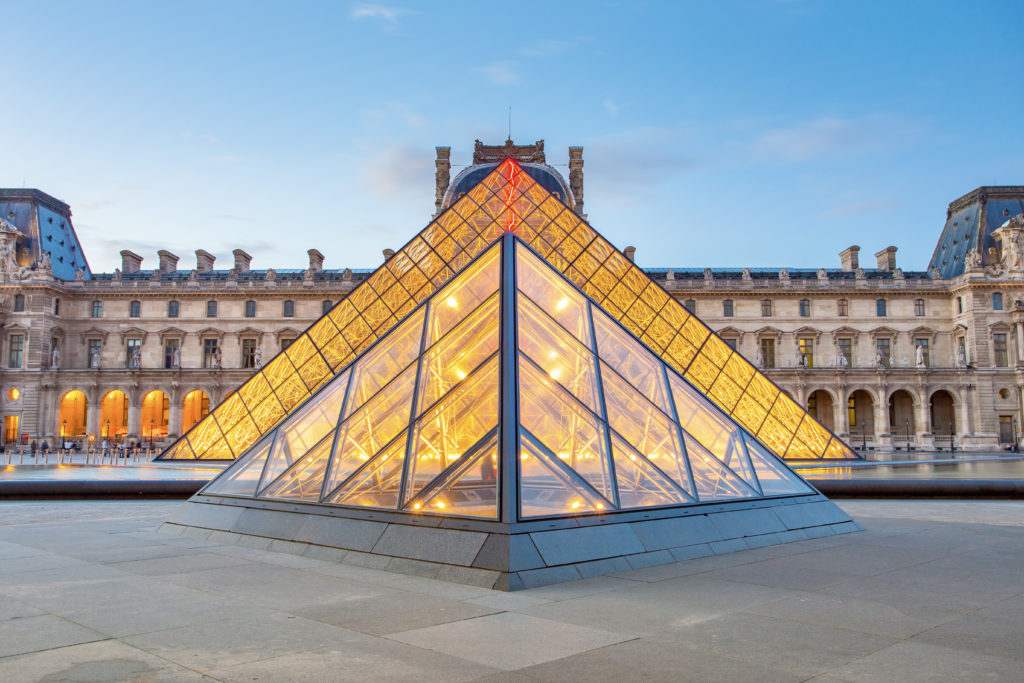
However, as you might imagine, visiting the Louvre can be quite the experience.
It’s often packed with crowds, flashing cameras, selfie sticks, and people bustling around or trying to touch the art. This can make it feel a bit chaotic and overwhelming.
But there’s good news! You can now explore the Louvre from the comfort of your home, avoiding the hustle and bustle.
I’ll guide you through how to virtually visit this iconic museum and view all its must-see masterpieces. Get ready to enjoy your personal Leonardo or Michelangelo experience in peaceful solitude.
Layout of the Louvre
The Louvre is a U shape, divided into three wings: Denon, Sully, and Richelieu. Each of the wings has four floors.
The Denon Wing is home to the Louvre’s best known art work, including the world’s most famous painting, the Mona Lisa .
The Sully Wing is known for its statuary and antiquities.
The Richelieu Wing houses the lavish apartments of Napoleon III and some famed Dutch art works.
Virtual Tour of Louvre Masterpieces
Let’s take an online virtual tour of the Louvre, wing by wing.
You can see all the must see masterpieces via 360 video tours, YouTube videos, or online tours on the Louvre Website itself. For a lengthy overall YouTube tour of the Louvre, click here .
The Denon Wing
The Denon Wing is the most visited part of the Louvre. It boasts the fabulously ornate Apollo Gallery, with high arches and frescoed ceilings.
It’s a shrine to Sun King Louis XIV. The paintings were begun by Charles Le Brun and completed by Eugene Delacroix.
1. French Paintings in the Denon Wing
The Denon Wing is most renowned for its iconic French paintings from the Neoclassical and Romantic periods of art history. The must see French masterpieces include:
- Eugene Delacroix, Liberty Leading the People
- Jacques-Louis David, The Coronation of Napoleon
- Theodore Gericault, Raft of the Medusa
- Jean-Auguste-Dominique Ingres, Grand Odalisque
You can take a virtual tour of the recently restored Apollo Gallery on the Louvre’s website here . You can learn about the Coronation of Napoleon from this Louvre YouTuber .
You can take a virtual video tour of the world’s most famous French painting, Liberty Leading the People here . And learn about the Grand Odalisque here .
Via my blog, you can also explore the Louvre’s underrated masterpieces in the Denon Wing.
I also have a guide to what I think is the best painting in the Louvre , Gericault’s Raft of the Medusa , a then-scandalous painting based on a true story.
2. Italian Paintings in the Denon Wing
The Denon Wing also boasts treasures from the Italian Renaissance.
This is where you’ll find works by Sandro Botticelli , Leonardo da Vinci , Raphael , and Titian. The must see masterpieces include:
- Leonardo Da Vinci, Mona Lisa
- Leonardo Da Vinci, The Virgin and Child With St. Anne
- Titian, Pastoral Concert
- Raphael, Portrait of Baldasarre Castiglione
- Paolo Veronese, The Wedding Feast at Cana
You can take a virtual 360 tour of the Grand Gallery, which houses much of the Louvre’s Italian art.
If you’re a Mona Lisa fan, the Louvre is offering the museum’s first virtual reality experience , which brings to life the story of the enigmatic portrait. You can also take a virtual tour of the Mona Lisa here , with Smarthistory, an artsy YouTube channel.
In the Louvre’s busiest room, the Mona Lisa stares across at Veronese’s massive Wedding Feast at Cana . You can take a virtual tour and get the full scoop on the Louvre’s largest painting here .
You can virtually tour Raphael’s paintings, including Baldasarre , on Google Arts & Culture . Learn about Titian’s Pastoral Concert , which inspired Edouard Monet’s groundbreaking painting Luncheon on the Grass , here .
READ : 3 Day Impressionism Tour of Paris
3. Sculptures in the Denon Wing
If you prefer sculpture to painting, the Denon Wing has one of the world’s most magnificent sculptures — the Winged Victory of Samothrac e.
It also has a room on the ground dedicated to Italian sculpture, the Michelangelo Gallery. It’s one of my favorites spots in the Louvre.
It’s home to Michelangelo’s Dying Slave and Rebellious Slave , from 1513-15. These sculptures seem to struggle to escape the marble.
They were originally intended for the Tomb of Pope Julius II in Rome. But Michelangelo got distracted with the ceiling of the Vatican’s Sistine Chapel and could never finish the tomb.
READ : Masterpieces of the Vatican
You can also find Antonio Canova’s incredibly romantic Psyche Revived by Cupid’s Kiss . It’s considered Canova’s master work.
You can take a virtual tour of Michelangelo’s Slaves here , a virtual tour of Canova’s work on Google Arts & Culture , and a virtual tour of Canova’s Psyche here . You can take a virtual 360 tour of the Winged Victory here .
2. The Sully Wing
In the Sully Wing, you’ll find some of the world’s most beautiful sculptures, antiquities, and the remains of the Medieval Louvre.
One of the Louvre’s greatest ladies, a Hellenistic masterpiece, is here — the Venus de Milo . Even without arms, Venus de Milo is considered the classical epitome of female beauty.
You can also see another masterwork, Sleeping Hermaphrodite , a mythological merger of a male and female body. The ancient sculpture was discovered in Rome near the Baths of Diocletian.
Cardinal Scipione Borghese commissioned the Italian sculptor Gian Lorenzo Bernini to carve the mattress in 1619. He later sold the piece to the French when he was strapped for cash.
READ : The Bernini Trail in Rome
The Egyptian Antiquities are a well loved highlight of the Sully Wing. The collection features the 12 ton Great Sphinx of Tanis, model ships, ancient sculptures, a massive statue of Ramses II, and a sarcophagus room.
The medieval Louvre is also a fascinating place. Originally, the Louvre was a 12th century fortress built by King Philippe Auguste.
The lower levels are all that remain. Archeologists discovered and excavated the underground medieval remains during the construction of I.M. Pei’s pyramid in 1983-85.
You can take a virtual tour of all the Louvre’s Roman Antiquities here , the Venus de Milo here , and the Sleeping Hermaphrodite here . You can take a virtual tour of the famed Egyptian Antiquities here and walk around the Medieval Louvre here .
3. The Richelieu Wing
In Richelieu Wing, you can admire the Louvre’s Mesopotamian Antiquities, Napoleon III’s Second Empire rooms, sculptures, and some amazing Dutch masterpieces.
The Richelieu Wing boasts the spectacular Cour Marly, a spacious glass roofed courtyard.
It’s stuffed with 17th and 18th marble and white stone sculptures, many commissioned by Sun King Louis XIV and Louis XV. There’s also a magnificent Fountain of Diana, dating from 1550.
Perhaps the most famous part of the Richelieu Wing is the Napoleon III apartments. They were built between 1852-57 to accommodate visiting dignitaries. They’re sumptuous.
Crystal chandeliers glitter, gilded furniture gleams, and the ceilings sport beautiful frescos — all set amid red velvet and red drapery. The Rococo state dining room could seat almost 100 people.
You can virtually tour the Cour Puget here and the Cour Marly here . You can take a virtual tour of Napoleon’s Apartments here .
The Richelieu Wing is also home to some unmissable Dutch old master paintings, including:
- Johannes Vermeer, The Lacemaker
- Johannes Vermeer, The Astronomer
- Rembrandt, Bathsheba at Her Bath.
- Hieronymous Bosch, Ship of Fools
- Georges de la Tour, The Cheat with the Ace of Diamonds
From the Louvre’s website, you can see and get an education on The Lacemaker here , Bathsheba here , Ship of Fools here , and The Cheat here .
If you’re a Beyonce fan, her recent music video featured pieces from the Louvre. Now, you can follow the Beyonce Louvre Trail on the Louvre website.
The Louvre is also featuring an Artwork of the Day . If you’re interested in the history of the Louvre, here’s my guide .
Tickets For The Louvre
Naturally, if you decide to visit the Louvre in person, it’s essential to p re-book a skip the line ticket . If you take your art seriously, you may want to book a guided tour .
I hope you’ve enjoyed my guide to taking a virtual tour of the Louvre. You may enjoy these other Paris travel guides:
- 3 day itinerary for Paris
- 3 day art weekend in Paris
- 5 day itinerary for Paris
- Hidden gems in Paris
- Guide to the Latin Quarter
- Guide to Montmartre
- Best museums in Paris
- Monet guide to Paris
- Louvre survival Tips
- Tourist traps to skip in Paris
- Guide to the Musee d’Orsay
If you’d like to take a virtual tour of the Louvre from home, pin it or later.

1 thought on “How To Virtually Tour of Paris’ Louvre & See Every Masterpiece”
Good day. I was wondering if you would recommend the Louvre at night . Is there a significant difference in terms of avoiding crowds, the lighting for pics and access to different wings?
Leave a Comment Cancel reply
Save my name, email, and website in this browser for the next time I comment.
Last Updated on January 20, 2024 by Leslie Livingston
- Skip to main content
- Keyboard shortcuts for audio player
Not Heading To Paris This Summer? The Louvre Has Digitized 482,000 Artworks

The Apollon Gallery at the Louvre museum in Paris on Jan. 14, 2020. Stephanie de Sakutin/AFP via Getty Images hide caption
The Apollon Gallery at the Louvre museum in Paris on Jan. 14, 2020.
One of the world's most massive museums has announced an encompassing digitization of its vast collection.
"The Louvre is dusting off its treasures, even the least-known," said Jean-Luc Martinez, President-Director of the Musée du Louvre, in a statement on Friday . "For the first time, anyone can access the entire collection of works from a computer or smartphone for free, whether they are on display in the museum, on loan, even long-term, or in storage."
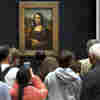
Coronavirus Live Updates
France's louvre reopens most of the museum — sans big crowds.
Some of this is hyperbole. The entire collection is so huge, no one even knows how big it is. The Louvre's official release estimates about 482,000 works have been digitized in its collections database , representing about three quarters of the entire archive. (The museum's recently revamped homepage is designed for more casual visitors, especially those on cellphones, with translations in Spanish, English and Chinese.)
"It's just overwhelming," says Andrew McClellan, a Tufts University professor and author of Inventing the Louvre: Art, Politics and the Origins of the Modern Museum . The strategy of putting nearly everything online is in keeping with the Enlightenment ideals that shaped the museum after the French Revolution, he says: "collecting the world's knowledge together under one roof, and then making it available for researchers and the general public."
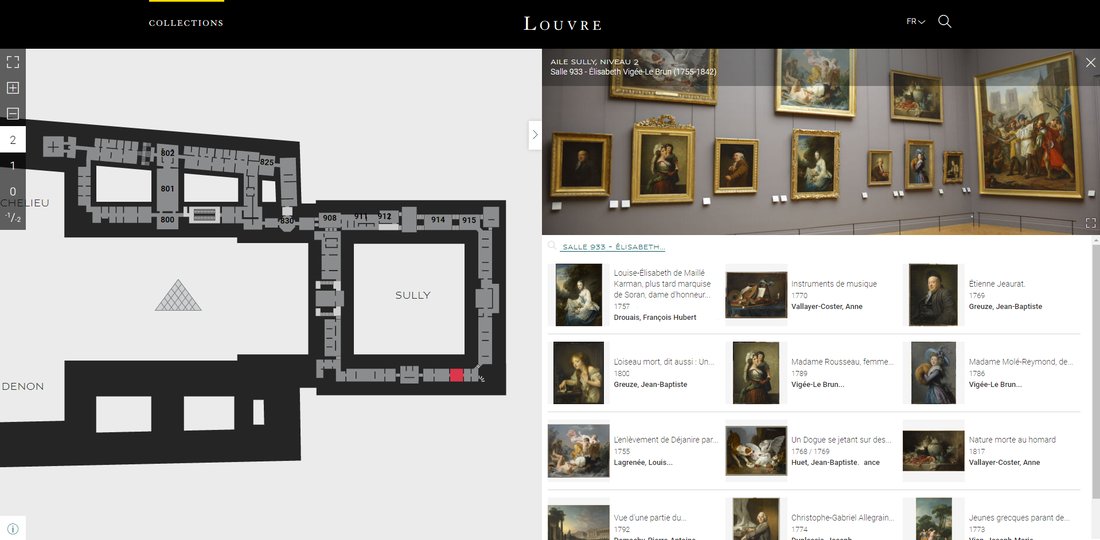
Major institutions have been digitizing their collections for many years, but the Louvre's online archives required especially exhaustive labor. Every image, according to the museum, is accompanied with scientific data: "title, artist, inventory number, dimensions, materials and techniques, date and place of production, object history, current location and bibliography. ... These documentary entries, drawn up by museum curators and researchers, come from two museum collection databases, and are updated on a daily basis."
Given the expense of running those databases, McClellan and other observers have wondered whether the Louvre may find ways to monetize some of these images, and whether the online collection will affect real-life attendance. ( " I am sure that this digital content is going to further inspire people to come to the Louvre to discover the collections in person," the museum's director said in his statement.)

'The Louvre Is Suffocating': Museum Closed As Workers Strike, Citing Overcrowding
It's also unclear how many of the online images may be of sacred objects, from countries other than France, and not meant to be casually viewed. The digital catalog includes items that may have been plundered — by Nazis or colonial forces — in a separate album titled "MNR" works , which stands for Musées Nationaux Récupération, or National Museums Recovery.
"This has to be coming up against these questions around restitution and repatriation and thinking about what the digitization of cultural heritage means within a context that is contested," observes Suse Anderson, a professor of Museum Studies at George Washington University , who studies the impact of digital technology on museums. She's generally impressed, she says, by the Louvre's online expansion, especially since it steers visitors beyond the obvious marquee works of art such as the Mona Lisa and the Venus de Milo .
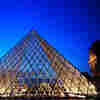
Architecture
Landmark at the louvre: the pyramid turns 20.
"I'm a serendipitous browser," she says. "I'm not the person seeking the hero works. They're so easy to find. I'm the person who wants to find the unexpected."
Like the actual museum, the Louvre's online collection provides pathways towards new discoveries, Anderson says. "It helps you see things you might not otherwise. It helps you find surprises. And that's where I think you often get the connection to your own life, is when you find something that resonates, that isn't the thing you went looking for."
And online, you can ... Louvre ... the jostling crowds of tourists far behind.

Need help to find things to do? Write to us on WhatsApp

Whether you’re an art connoisseur, a history enthusiast, or a curious traveler, the Louvre beckons, promising an enchanting odyssey of creativity and heritage. Prepare to be captivated, inspired, and transported into the depths of artistic brilliance as we embark on an exploration of the Louvre—a timeless sanctuary where the past and present intertwine in a dance of beauty.
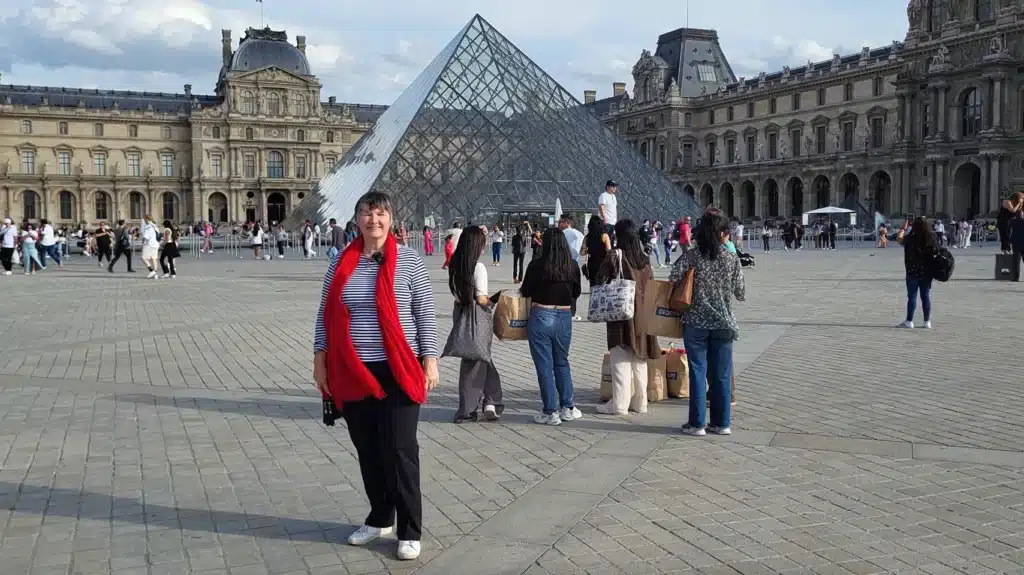
Colleen in front of Le Louvre main entrance (Pyramide du Louvre)
What to know before visiting
1. Master the Art of Skip-the-Line Tickets: Ah, the Louvre—the treasure trove of art and history. But, let’s face it, nobody wants to spend precious vacation time waiting in line. Opt for skip-the-line tickets, easily purchased online.
2. Plan Your adventure in the Artistic Wonderland: The Louvre is vast, actually the biggest museum in the world ! So you can’t see everything, simply plan the rooms you would want to see and have fun! Download the Louvre’s official app to access interactive maps and guided tours.
3. Embrace Comfortable Footwear for the Marathon: Trust us, it’s huge ! So prepare for comfortable footwear, maybe water and not something with a sharp timetable afterwards.
4. Know Your Photography Etiquette: Picture this: you, in front of the iconic Mona Lisa, camera poised for the perfect shot. But wait, there’s an art to art photography.
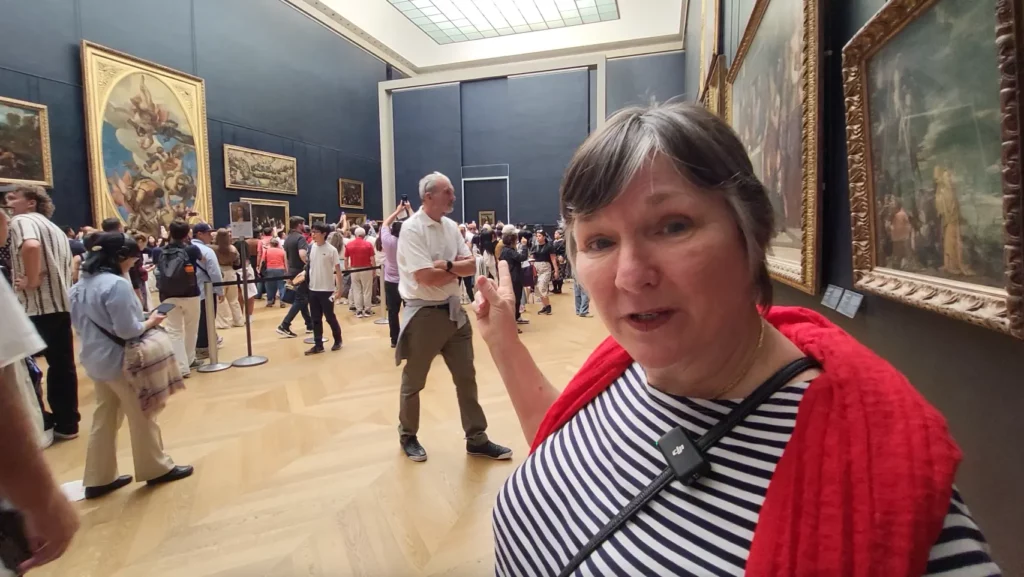
Inside the famous crowded room where the Mona Lisa (La Joconde) is located
Time & Opening hours
The Louvre’s opening hours are dynamic, welcoming visitors daily except Tuesdays. Explore its vast treasures from 9 a.m. to 6 p.m., with night hours until 9:45 p.m. on Wednesdays and Fridays. Be sure to check for any special closures or changes, ensuring a seamless journey into this iconic cultural haven.
Colleen & Antoine’s Experience of Le Louvre
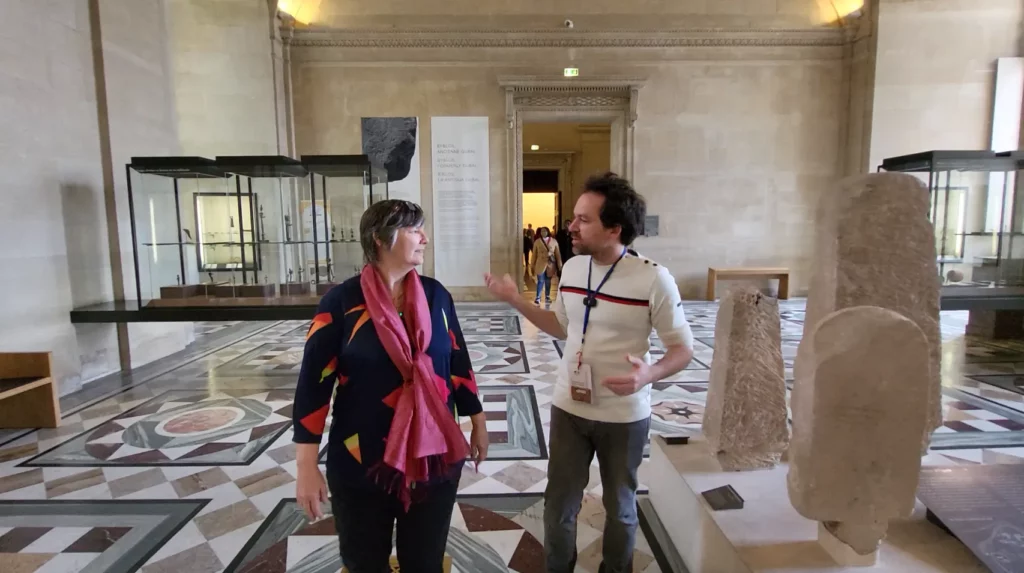
Colleen during a Private Guided Tour of Le Louvre
VIP Tour With A Private Guide
Small group tour with a guide.
9 a.m. to 6 p.m., closed on Tuesdays.
Adults: €22, Free for those under 18.
Yes, for skip-the-line access .
Yes, book in advance for insights .
Mona Lisa, Venus de Milo, Winged Victory.
Yes, without a flash.
Yes, EU students under 26 enter free.
Yes, with elevators and ramps.
3 hours to a full day.
No, but there are on-site cafes.
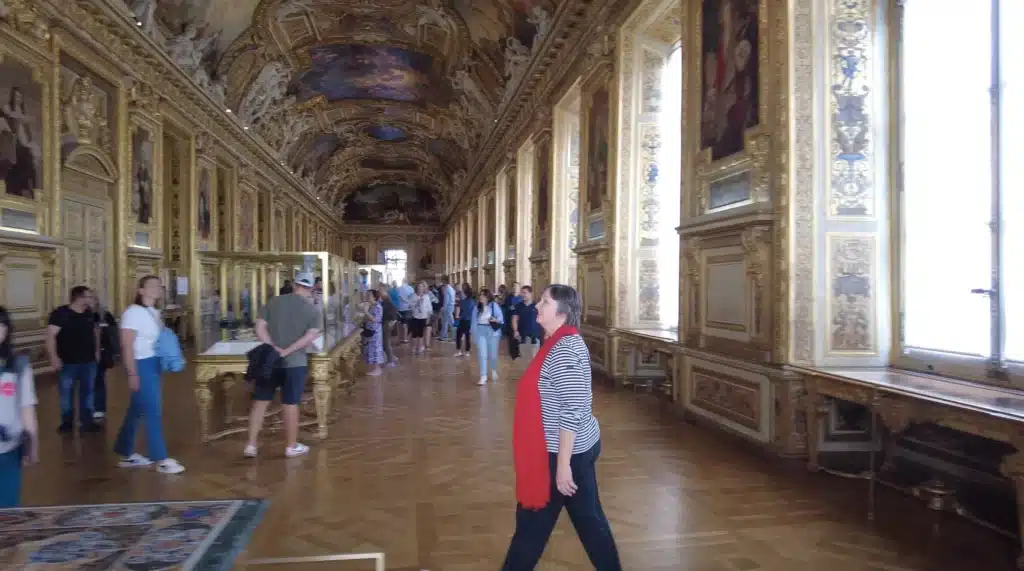
Colleen inside the Denon building of Le Louvre (The Galerie d’Apollon – France’s Crown Jewels)
Top attractions and things to do Paris
The Louvre has put its entire art collection to view online
Mar 29, 2021 • 2 min read
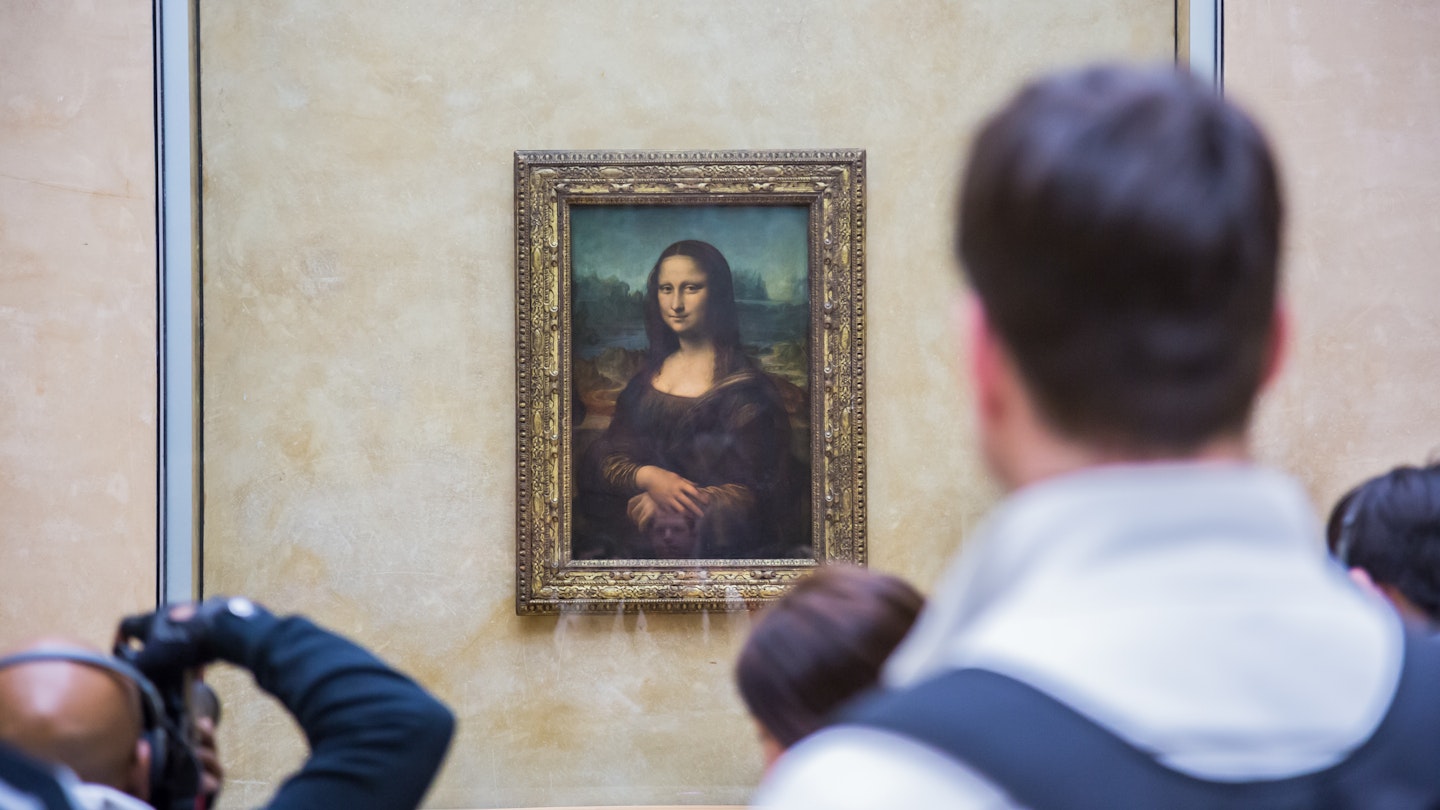
Leonardo da Vinci's Mona Lisa is housed at the Louvre © S-F/Shutterstock
It's the world's most visited museum and houses one of the most famous paintings on the planet - Leonardo da Vinci's Mona Lisa - and those who dream of visiting the Musée du Louvre in Paris can now do so virtually. The richness of the Louvre collections can be seen on a new platform that brings together all of the museum’s artworks in one place, and a new website that is more user-friendly and immersive has also been launched.
For the first time ever, the entire Louvre collection is available online, whether works are on display in the museum, in storage or on long-term loan in other French institutions. Designed for both researchers and curious art lovers, more than 482,000 entries can be seen for free, including works from the Louvre and the Musée National Eugène-Delacroix and sculptures from the Tuileries and Carrousel gardens. There are also works from Musées Nationaux Récupération, which were recovered after WWII and entrusted to the Louvre until they can be returned to their legitimate owners.
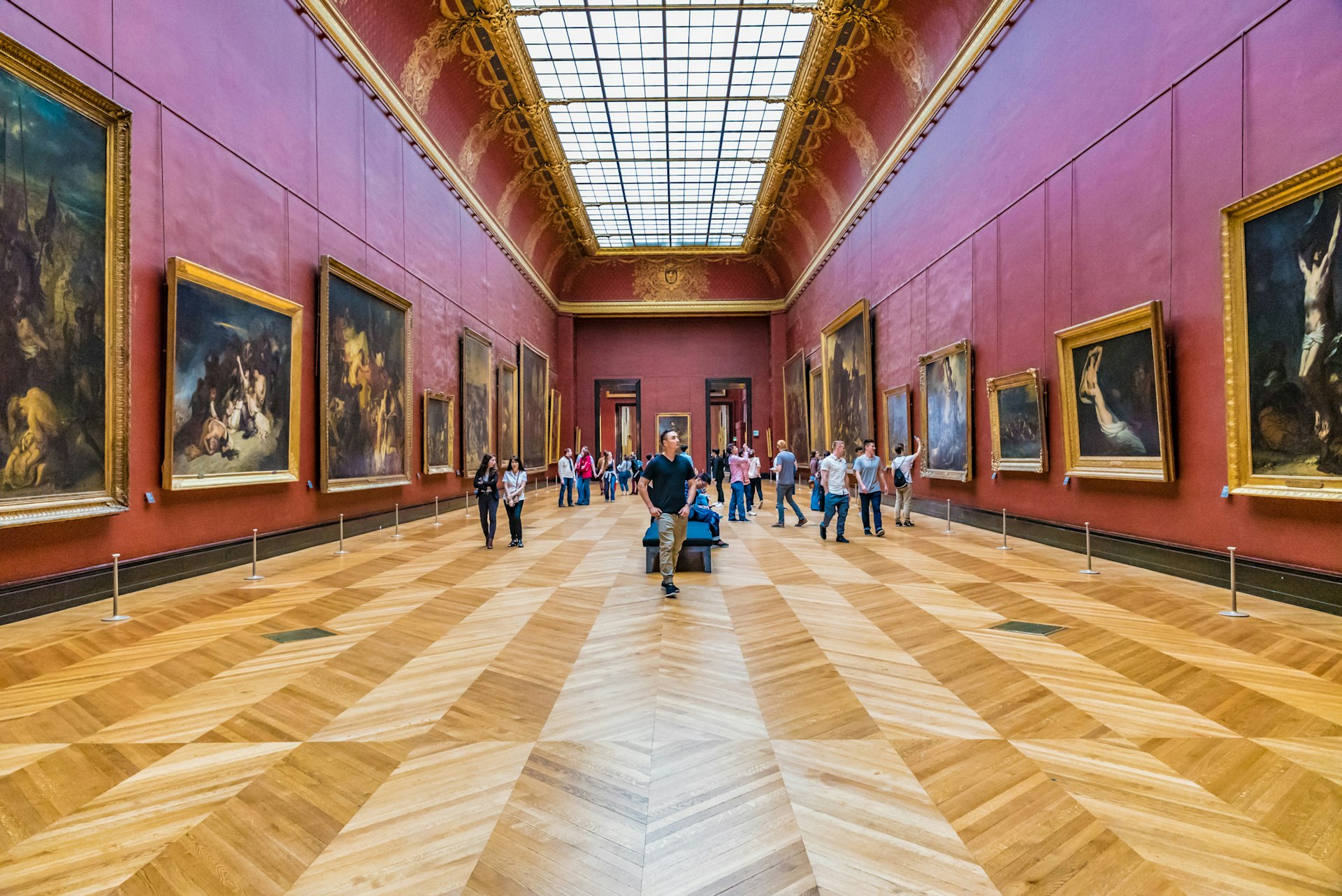
The site offers several ways to delve into the collections including simple or advanced searches, entries by curatorial department or by themed albums. An interactive map helps visitors prepare or extend their visit and allows them to explore the museum room by room. Updated regularly by museum experts, the database will continue to grow and reflect advances in research.
The second way to admire artworks from the museum is via its new website. Divided into three main sections and focusing on works in the collections and the sumptuous settings they're displayed in, the site invites visitors to appreciate the former palace as they move from room to room. Available in French, English, Spanish and Chinese, the site can be visited on tablets and computers but is intended primarily for use on smartphones. It is designed to stay in sync with the Louvre as the museum develops more digital content.
"The Louvre is dusting off its treasures, even the least-known," says Jean-Luc Martinez, president-director of the Musée du Louvre. "The Louvre’s stunning cultural heritage is all now just a click away. I am sure that this digital content is going to further inspire people to come to the Louvre to discover the collections in person." The new Louvre website is available here , and the new Louvre collections website can be accessed here .
You might also like:
The best museums for American art in the US The Met launches virtual art exhibition with augmented reality The Uffizi Gallery will spread its famed art collection across Tuscany
Explore related stories

Apr 23, 2024 • 6 min read
From Paris to Buenos Aires, you’ll want to settle in and raise a glass at these famous literary bars, notebook at the ready.

Mar 31, 2024 • 10 min read

Mar 22, 2023 • 5 min read

Jan 18, 2023 • 6 min read
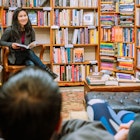
Jul 29, 2022 • 10 min read

Mar 30, 2022 • 4 min read
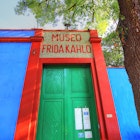
Mar 8, 2022 • 7 min read

Jan 31, 2022 • 8 min read

Jan 28, 2022 • 3 min read
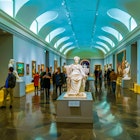
Oct 4, 2021 • 2 min read
Louvre museum makes its entire collection available online
The Louvre museum in Paris said Friday it has put nearly half a million items from its collection online for the public to visit free of charge.
Issued on: 26/03/2021 - 19:09
As part of a major revamp of its online presence, the world's most-visited museum has created a new database of 482,000 items at collections.louvre.fr with more than three-quarters already labelled with information and pictures.
It comes after a year of pandemic-related shutdowns that has seen an explosion in visits to its main website, louvre.fr, which has also been given a major makeover.
"It's a step that has been in preparation for several years with the aim of serving the general public as well as researchers. Accessibility is at the heart of our mission," said president-director Jean-Luc Martinez.
The new database includes not only items on public display in the museum but also those in storage, including at its new state-of-the-art facility at Lievin in northern France .
#ArtExplora supports @MuseeLouvre . The even more visual, user-friendly, and immersive website will allow you to appreciate the museum’s collections as if you where physically amongst them. Thanks to https://t.co/P4yZypRvof , art will come to you. #cultureforall #art pic.twitter.com/nOHWOzF9aU — Art Explora (@explora_art) March 26, 2021
The platform also includes the Delacroix museum, which is run by the Louvre , as well as sculptures from the neighbouring Tuileries gardens and works recovered from Germany since the end of the war in 1945 that are waiting to be restored to the families from which they were looted.
The museum announced earlier this month that it would intensify its efforts to restore items looted from Jewish families by the Nazi regime.
It is working to complete the verification of all 13,943 items acquired between 1933 and 1945, a process it hopes to complete within five years, to be followed by investigations on works acquired in later decades.
Martinez estimated that around one percent of portraits in the collections were looted.
"The Louvre has nothing to hide, and the reputational risk is enormous," he said. "When the next generations want to know where these collections came from, how do we react? By doing the historical work and establishing the facts."
Daily newsletter Receive essential international news every morning
Take international news everywhere with you! Download the France 24 app
The content you requested does not exist or is not available anymore.
Discover this place
1,356 items.
You Can Now Explore the Louvre’s Entire Collection Online
A new digital database features 480,000 works from the Paris museum’s holdings
/https://tf-cmsv2-smithsonianmag-media.s3.amazonaws.com/accounts/headshot/nora.png)
Nora McGreevy
Correspondent
:focal(1053x663:1054x664)/https://tf-cmsv2-smithsonianmag-media.s3.amazonaws.com/filer/80/79/80798363-797c-438b-8a83-737594f2f09f/louvre_museum_228021559.jpeg)
When cultural institutions around the world were forced to shutter last year due to the Covid-19 pandemic , even the most popular art museum in the world felt the effects. The Louvre , home to such masterpieces as the Mona Lisa , welcomed just 2.7 million visitors in 2020—a 72 percent drop from 2019, when 9.6 million people flocked to the Paris museum.
But even as physical museums remained closed, art enthusiasts continued to seek inspiration in new ways : In that same pandemic year, 21 million people visited the Louvre’s website, according to a statement .
Thanks to a major website redesign and a new online collection database, browsing the historic museum’s holdings from home is easier than ever, reports Alaa Elassar for CNN . For the first time ever, the Louvre’s entire art collection is available to search online. The updated catalogue boasts more than 480,000 entries, from rare items stowed away in storage to the iconic Venus de Milo and Winged Victory of Samothrace . (Though the digital database is free to browse, offerings are not open access , meaning users cannot directly download, share or reuse the images.)
“Today, the Louvre is dusting off its treasures, even the least-known,” says the museum’s president, Jean-Luc Martinez, in the statement. “… [A]nyone can access the entire collection of works from a computer or smartphone for free, whether they are on display in the museum, on loan, even long-term, or in storage.”
Martinez adds, “The Louvre’s stunning cultural heritage is all now just a click away.”
Viewers can also click through an interactive map of the museum, virtually walking through the cavernous halls of the Renaissance castle or the sleek steel-and-glass pyramid designed by American architect I.M. Pei in 1989.
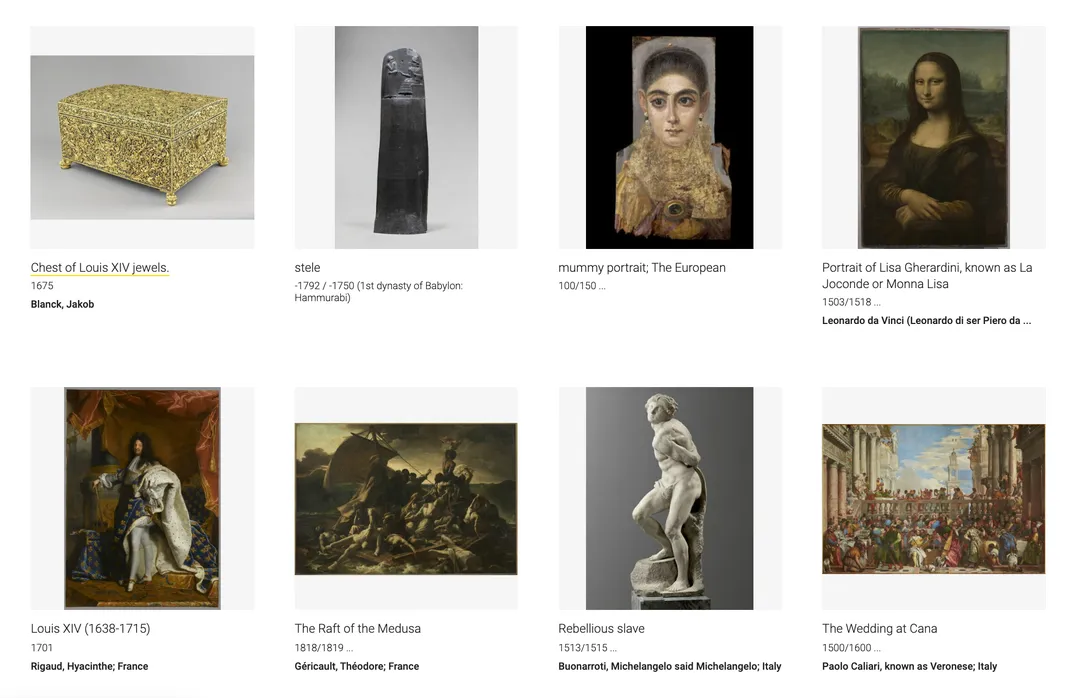
Previously, the public only had access to about 30,000 listings of works in the Louvre’s collections, reports Vincent Noce for the Art Newspaper . Per France24 , more than three-quarters of the entries in the Louvre’s online collection contain images and label information. The museum plans to continue to expand and improve the database in the coming months.
The archive also includes the collections of the Musée National Eugène-Delacroix , which is run by the Louvre, and the nearby Tuileries Garden , as well as a number of Nazi-looted artworks that are in the process of being returned to their original owners’ families.
According to the new online catalogue , about 61,000 works stolen by the Nazis were retrieved from Germany and brought back to France after World War II. Of these works, 45,000 have been returned to their rightful owners. A number of others were sold by the French state. The remaining 2,143 unclaimed works were categorized as National Museum Recovery (MNR) and entrusted to French cultural institutions, including the Louvre, for safekeeping.
Despite the Louvre’s involvement in repatriation efforts, lingering concerns remain that Nazi-looted art may have made its way into the Louvre’s permanent collections during the war. Since hiring curator Emmanuelle Polack to lead a wartime provenance research project in January 2020, the Louvre has checked nearly two-thirds of the 13,943 works it acquired between 1933 and 1945, Martinez tells the Art Newspaper .
In the future, the museum plans to debut the findings of this research project on its website. The director notes that he has instructed curators to conduct a similar investigation of the thousands of artworks in the Louvre’s collections that hail from countries formerly under French control, such as Algeria, Tunisia, Syria and Lebanon.
The goal of this long-term project, he says, will be to identify which items in the Louvre’s encyclopedic collections were obtained through looting or colonial violence.
“Our collections are mostly archaeological and come from digs shared with the countries of origin,” Martinez tells the Art Newspaper , adding that the museum often obtained new archives through “bilateral” legal agreements.
At the same time, Martinez adds, “[M]useums like the Louvre served imperial ambitions and we have to deal with this history.”
Get the latest stories in your inbox every weekday.
/https://tf-cmsv2-smithsonianmag-media.s3.amazonaws.com/accounts/headshot/nora.png)
Nora McGreevy | | READ MORE
Nora McGreevy is a former daily correspondent for Smithsonian . She is also a freelance journalist based in Chicago whose work has appeared in Wired , Washingtonian , the Boston Globe , South Bend Tribune , the New York Times and more.
Explore the collections
Architecture & decoration
Arms and armour
Arts of the book
Jewellery & finery
Drawings & prints
Writing & inscriptions
Coins & medals
Funerary monuments & elements
Monuments & objects of worship
Domestic items
Personal items
Tools & instruments
Seals & glyptic art
Textiles & clothing
Vessels & dishes
Themed albums
Masterpieces of the louvre, national museums recovery, acquisitions made in 2022, acquisitions made in 2021, interactive map of the museum.

Gestion des cookies
En autorisant ces services tiers, vous acceptez le dépot et la lecture de cookies et l'utilisation de technologies de suivi nécessaires à leur bon fonctionnement. Lire les Conditions générales de vente .
Off canvas navigation
Talk Travel - talk to travel better

Talk Travel
How to visit the Louvre: 16 tips for a perfect time there
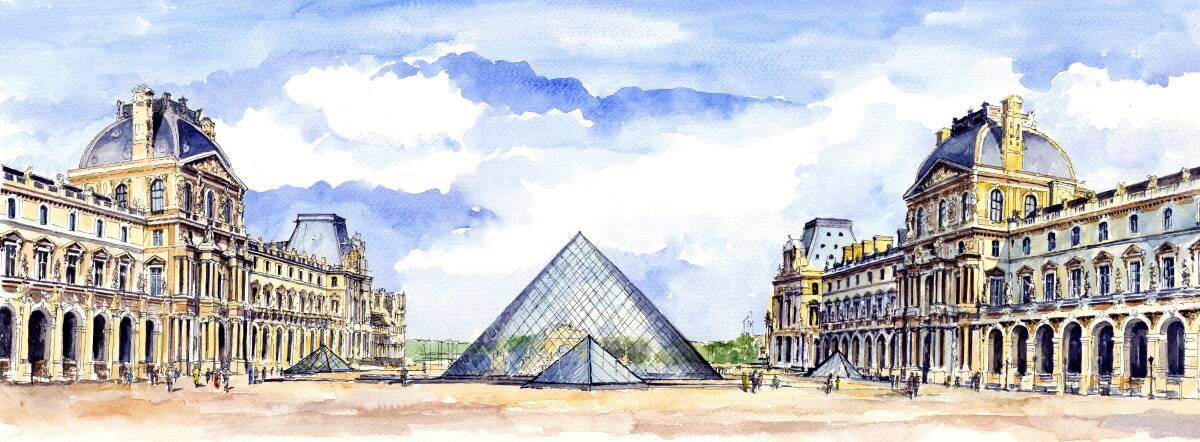
Home » France » How to visit the Louvre: 16 tips for a perfect time there
The Louvre is probably one of the most famous museums in the world. Almost everyone knows the iconic pyramidal construction and it’s a spot visitors to Paris always have on their list. But, the Louvre is also one of the biggest museums in the world, with more than 35,000 works of art and 300 rooms it’s sometimes overwhelming for the people visiting it. So if you’re thinking about how to visit the Louvre and enjoy your time there, fear no more! Here are some tips so you have the perfect visit to the Louvre.
1. First of all, you don’t have to visit the Louvre
Yes, it’s one of the most important museums in the world but if you’re not that into art or you feel like you’d rather visit other important spots in Paris, simply don’t go. Every visitor is different and everyone has different interests. It’s valid to skip places you’re not interested in. Really, if you’re just going so you can get a picture of the Mona Lisa, just skip it, you’ll probably enjoy more doing other things.
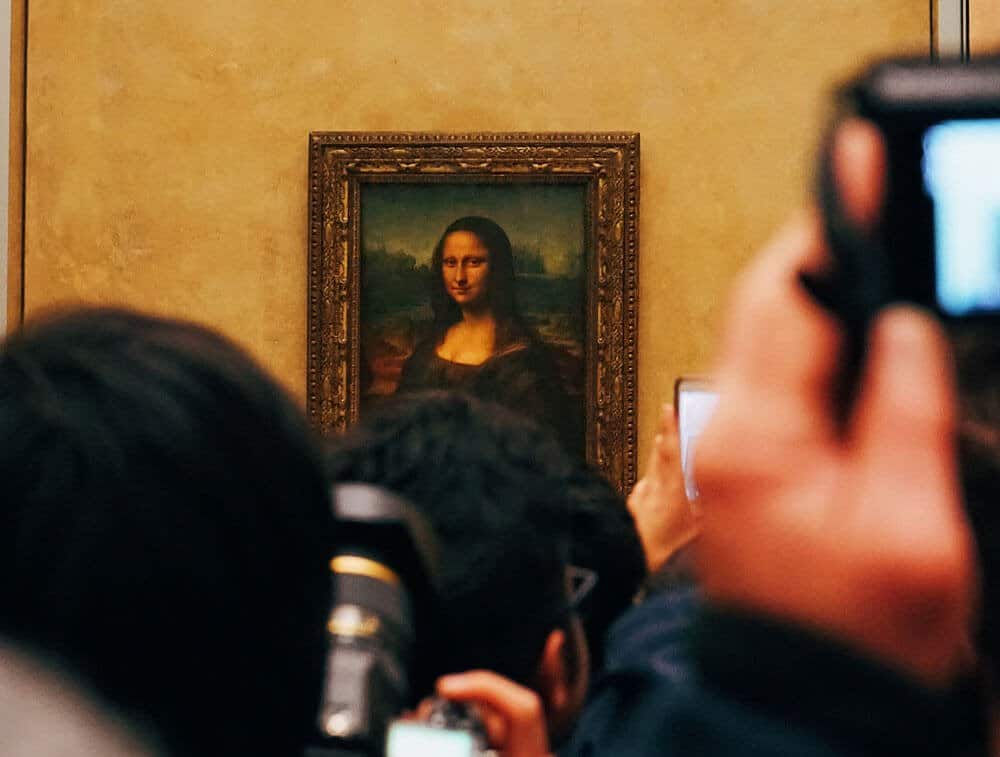
2. You won’t see everything, even if you visit it many times
The Louvre is HUGE so you’ll never be able to see everything in one visit (not even in two or three). Accept that you won’t see all of it and stop rushing it. I’ve seen so many people going from room to room, rushing it, trying to see everything. My guess is that they get out of the museum tired and cranky. Remember you’re probably on vacation, enjoy what you can in the time you have, don’t rush it.
3. How to visit the Louvre depends on you
With so many works of art and rooms to offer, the best thing to do is to plan beforehand what do you actually want to see in the Louvre. Before visiting, check the plans of the Louvre. Take your time to check the interactive map (I spent hours there before visiting) on the website of the Louvre. This interactive map will give you a better idea of where everything is. You can also print or save in your computer a map with all the information on the wings and rooms .
To have a general idea of the artworks housed in the Louvre check also the 8 curatorial departments the museum is divided in Egyptian Antiquities ; Greek, Roman and Etruscan Antiquities ; Near Eastern Antiquities ; Islamic Art ; Decorative Art ; Sculpture ; Paintings ; and Drawings & Prints .
4. Know how to get there
Since the Louvre is so famous, there are many ways to get there. You can use public transportation (which is better) or get there by car (there’s an underground place to park on Avenue du Général Lemonier). Most of the times it’s better to use the bus since the metro lines serving the Louvre can be crowded. Also, there are Vélib’ bike stations near the museum.
5. Buy your tickets in advance
If you want to avoid lines, buy your tickets in advance. Go to the official website of the Louvre to buy them. Another option is to have the Paris Pass , which gives you access to several museums around Paris and you can also take the fast track lane.
6. Know where to enter
Most visitors enter the Louvre through the glass pyramid of the museum. Once you’re there, you’ll see signs like these:

This entrance is good if there’s no line but it’s safer to go into the museum through the Carrousel du Louvre . This is an underground shopping mall and you can enter the Louvre near an inverted glass pyramid that’s near the Apple store. There are almost no people in this line so it’s quicker. The Métro line 1 station is connected to the Carrousel du Louvre.
7. If you’re not sure, get a guide
Maybe you’re not that into art but you’re interested in seeing what the Louvre has to offer. In that case, the best option is to get a guide. There are guided tours in English every day at 11 am and 2 pm. These tours will take you to the Mona Lisa, the Winged Victory of Samothrace, the Venus de Milo, and a great selection of masterpieces. Book your “Welcome to the Louvre” tour here for 12 €.
The audio guide can be frustrating to use, instead, download the official Louvre app for iOS and Android . This is a free app but you can also buy additional information.

8. Get there early or during the evening
Most guides recommend getting to the Louvre super early to beat the crowds… and since most guides do this, most people do this too. It’s true that there are fewer people at 9 am when the Louvre opens but also consider getting there after 3 pm (right after Parisians have their food ). And for the best experience, visit the Louvre for the late-night opening: arrive after 6 pm on Wednesdays or Fridays and enjoy the museum up until 9:45 pm.
9. Wear comfortable clothing
Especially, wear comfy shoes. Avoid bringing big bags or backpacks, you won’t be able to move as freely as you’d want.
10. Respect the art

If you’ve gone to enough museums, you know how this works. Don’t smoke, drink, eat, raise your voice, touch artworks or run inside the museum. You can be asked to walk out in case you don’t follow these rules (and really… why would you even smoke inside the Louvre?).
Taking pictures and videos are permitted in the permanent collection exhibition rooms, don’t use flash or other lighting equipment. In the temporary exhibition rooms, you can’t take photos or videos.
11. Be careful of pickpockets
Since there are many tourists (and people in general) it’s a place where you may get robbed. Just be careful of your belongings and exercise your common sense .
12. Use the bathroom
Before entering the wings there are restrooms, don’t miss the chance to go. Believe me, you wouldn’t want to miss on something just because you want to go to the bathroom… not that it has happened to me.
13. Use the elevators
Save time and energy with these. If you check the map beforehand, you’ll see the elevators marked there so you don’t get lost.
14. Get out of the museum if you need to
The ticket you buy to enter the Louvre is good all day and for multiple entrances. If you’re planning on visiting different wings, a good idea is to exit the wing and cross through the entrance hall to enter other wings It’s faster and you don’t have to walk through the museum again.
15. Enjoy the building itself
The Louvre was originally a fortress but then it became one of the main residences of French kings. In 1793 (!) it became a museum so the building itself it’s worth a look. Don’t miss:
- Apollo Gallery (first floor, room 66) which seems to be covered in gold
- Islamic Galleries (ground floor and lower level) that is one of the newest wings of the Louvre
- Napoleon III Apartments, Richelieu Wing (first floor, rooms 82 to 92) where you can see the high style of living Napoleon had
- Marly Court, Richelieu Wing (ground floor and lower level), a white marble and stone courtyard full of sculptures
- Summer Apartments of Anne of Austria, Denon Wing (ground floor, rooms 22 to 28) where you’ll be able to see breathtaking ceilings commissioned by King Louis XIV in 1655.
16. Visit the Tuileries Garden
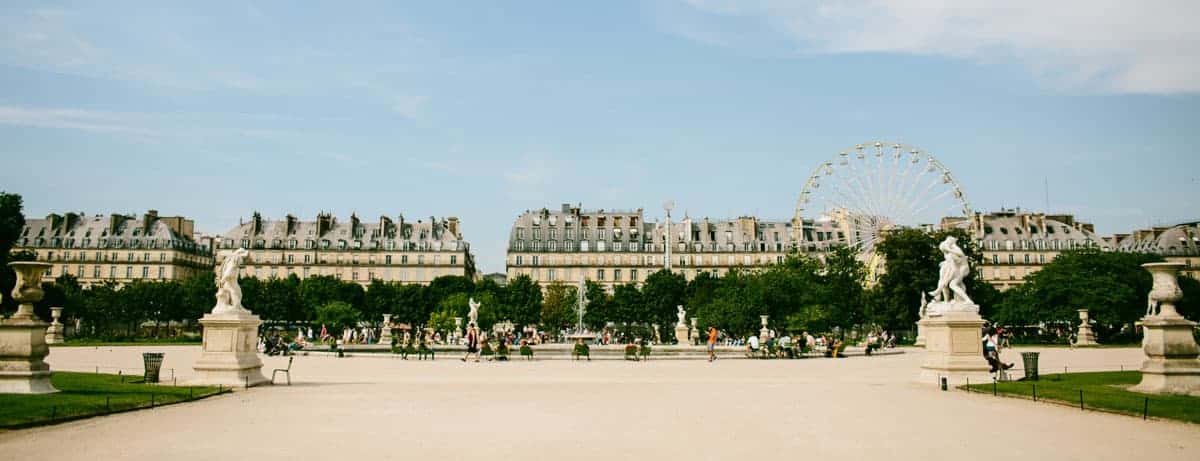
A nice place that also the kids will love . These gardens are between the Louvre and the Place de la Concorde. This is the largest and oldest public park in Paris and you’ll love its landscape art, sculptures, and a relaxing vibe. After relaxing there, have a nice hot chocolate in Angelina (a true Parisian thing to do!).
We hope these tips were useful, enjoy your visit to the Louvre!
Related stories

10 Tourist scams in France

10 tips to save money and travel cheap in France

Disneyland Paris -10 best things to do
Best vegetarian restaurants in paris.
La Nocturne du vendredi
Aller au contenu
- Billetterie
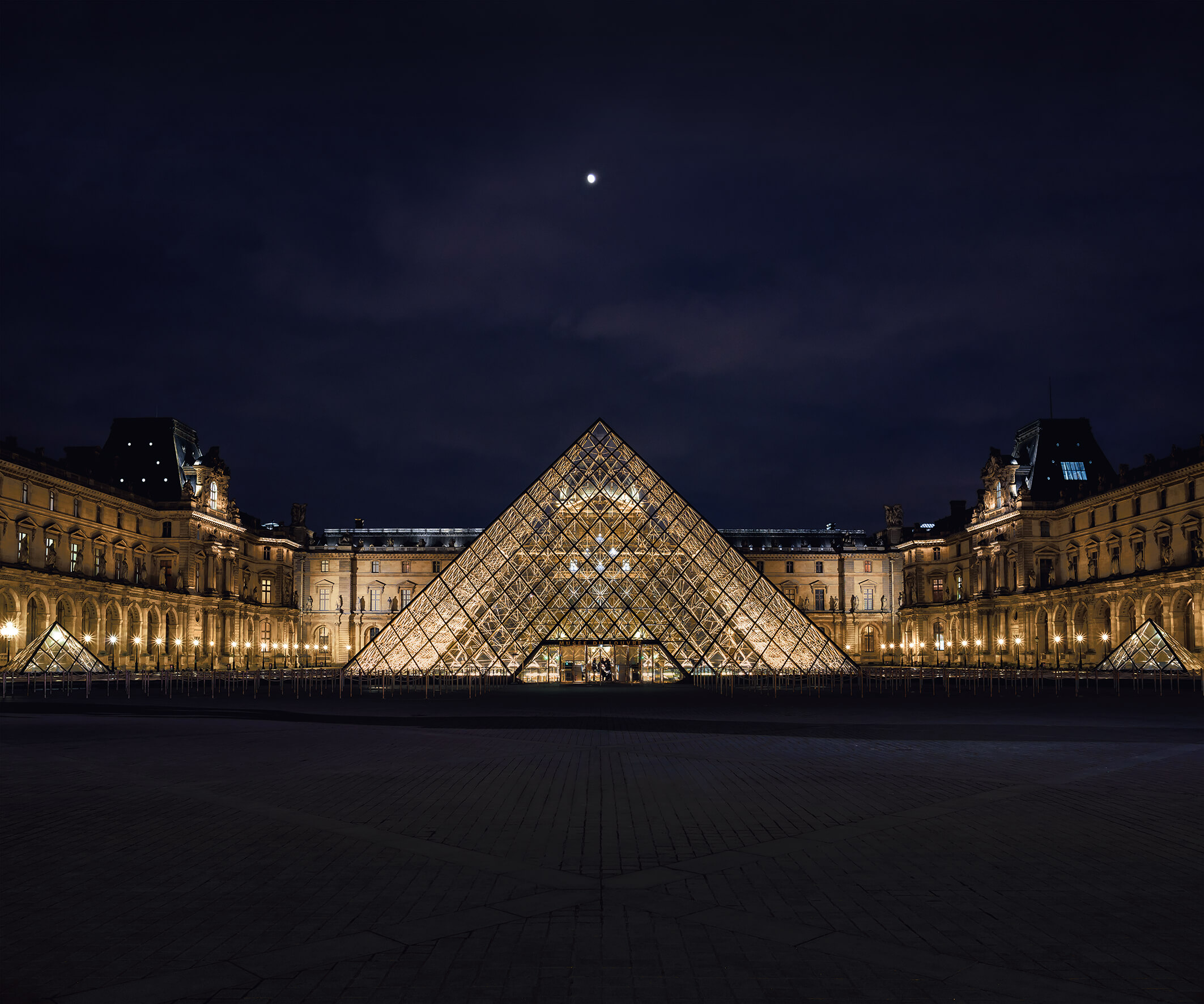
1 janvier 2023 – 31 décembre 2024
- Présentation
Autour de l'événement
En nocturne
NOCTURNE GRATUITE LE 1ER VENDREDI DE CHAQUE MOIS
De 18h à 21h45 (hors juillet et août) Les réservations ouvriront quelques jours avant la nocturne gratuite. Inscrivez-vous à la lettre d'information pour être informés.
Lettre d'information
Tous les vendredis, terminez votre semaine en beauté ou commencez votre week-end du bon pied et offrez-vous un moment de magie nocturne au milieu des collections du Louvre.
Au programme de ces nocturnes hebdomadaires, de nombreuses activités pour petits et grands et notamment les visites mini-découverte offertes avec le billet du musée, ou les parcours OFF avec des visites et activités insolites.
Nocturne jusqu'à 21h45 Dernières admissions à 20h30
- Visites guidées (13)
- Ateliers (2)
- Événements (1)
23 Février, 8 Mars, 15 Mars, 22 Mars, 29 Mars, 12 Avril, 19 Avril, 26 Avril 2024
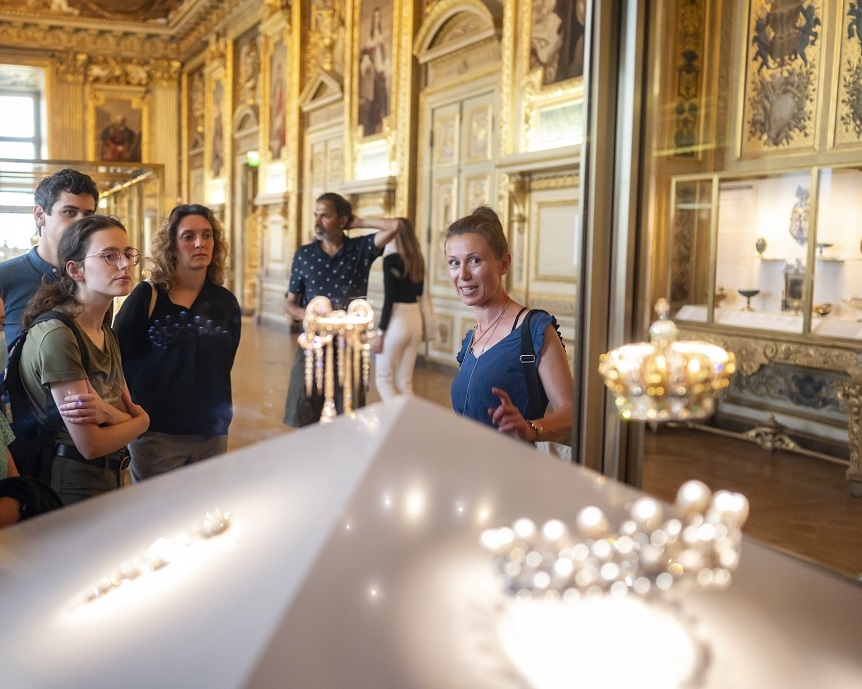
Les mini-découvertes en nocturnes
Visites guidées Dès 12 ans
Les vendredis à 18h30, 19h, 19h30, 20h Suivez l'un de nos conférenciers durant 20 minutes et découvrez une des nombreuses collections de musée.
Voir la visite
Vendredi, Samedi et Dimanche
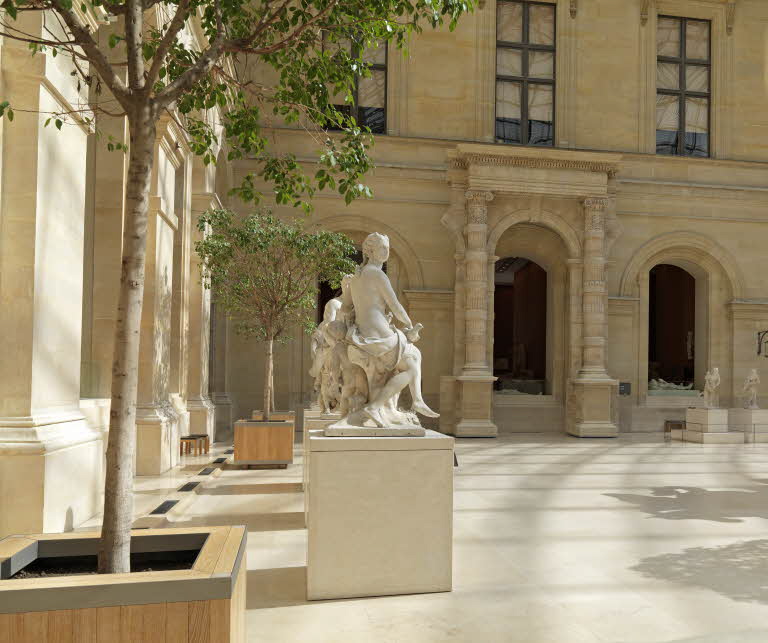
Le Louvre autrement
Visites guidées Adultes
Les samedis et dimanches à 11h, hors vacances scolaires. Visites en nocturne l es vendredis à 19h toute l'année. Profitez d'une visite loin des foules et venez découvrir les richesses de "l'autre Louvre", de ses espaces à couper le souffle et de ses chefs-d'œuvre méconnus.
17 Mai 2024

Parcours Off / En fleurs
Visites insolites Adultes
Un vendredi par mois à 18h30 Venez découvrir la technique du piqué de fleurs
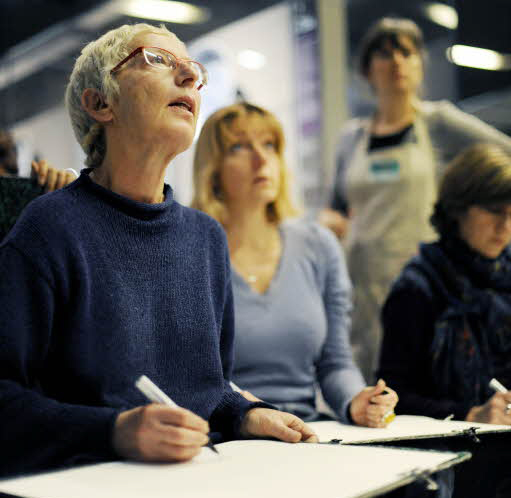
Parcours Off / Croquis décalés
Un vendredi par mois à 19h00 Vous n'avez jamais vraiment dessiné alors cet atelier est fait pour vous ! Des exercices surprenants vous permettront d'observer les œuvres différemment.
8 Mars, 19 Avril, 24 Mai, 14 Juin 2024
Parcours Off / Magie et mentalisme
Un vendredi par mois à 19h Ouvrez votre esprit et ne résistez pas à la magie de cette visite
22 Mars, 19 Avril, 24 Mai, 14 Juin 2024

Parcours Off / Yoga
Un vendredi par mois à 19h Venez tenter l’expérience inédite d’une séance de relaxation au coeur des œuvres.
15 Mars, 29 Mars, 31 Mai, 28 Juin 2024

Parcours Off / Danse
Un vendredi par mois à 18h30 Et si les œuvres vous incitaient à danser ? Explorer des gestes, composer des mouvements et enchaîner des pas de danse dans le musée.
31 Mai, 28 Juin 2024
Parcours OFF / En plumes
Un vendredi par mois à 18h00 Venez vous essayer à l'art de la plumasserie.
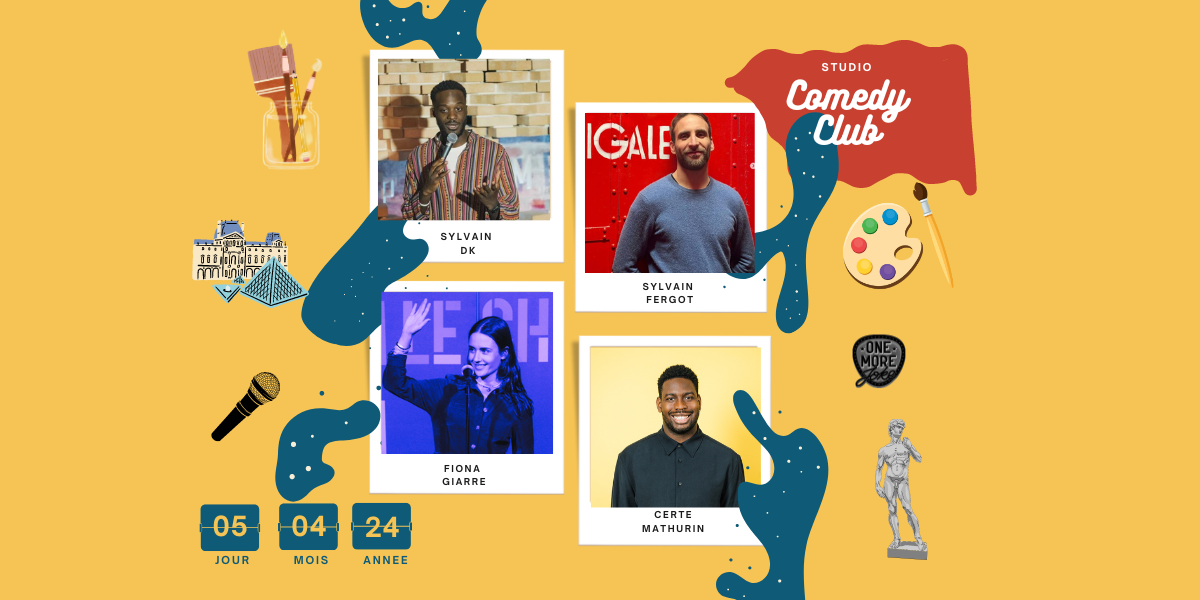
Le Studio Comedy Club
Ateliers Adultes
De 18h30 à 21h30 Le premier vendredi du mois de septembre à juin est gratuit pour tous.
Découvrir
7 Juin 2024

Studio fleuri
26 avril 2024.

Campus Louvre, la nocturne
De 19h00 à 21h30 Médiateurs le temps d’une soirée, les étudiants vous font partager leur approche sensible et créative des collections. Au fil de votre visite, venez à leur rencontre et laissez-vous surprendre !
Pas de résultats pour ce mois
Revenir aux onglets de la programmation en lien avec l'événement

Louvre Receives Bomb Threat Against 'Mona Lisa' and Other Masterpieces
T he Louvre museum in Paris received a written note from someone threatening to bomb the Mona Lisa and other valuable works of art, according to Le Figaro ’s Margaux d’Adhémar.
The threat was written in English and sent through the museum’s online contact form at 3:47 a.m. on March 17. It read: “We are committed to blowing up the Mona Lisa and many other masterpieces.”
After reading the note, Louvre officials requested a security agent from France’s Ministry of Culture to conduct a thorough sweep of the museum. Fortunately, the agent did not find anything suspicious during the search.
Le Figaro did not report any information on the perpetrator’s identity. The threat was signed “ Founding Fathers of the Confederation ,” which typically “refers to the 36 men that attended multiple conferences in 1860 that united colonies of British North America to become Canada,” per Artnet’ s Jo Lawson-Tancred.
The Louvre is one of the most well-known—and most visited —museums in the world. After welcoming 9.6 million visitors in 2019, the museum temporarily shut down during the Covid-19 pandemic. Since then, attendance numbers have been steadily recovering, with 7.8 million visitors in 2022 and 8.9 million in 2023.
Due to its high profile, the museum has faced a number of security threats over the years.
In 2017, guards shot a man carrying a machete who tried to enter the museum. In October, the Louvre and the Versailles Palace were both evacuated after receiving bomb threats. Searches of the sites came up empty, and both were reopened soon after the incident.
The Louvre’s most famous work, the Mona Lisa , has also been the target of several climate change protests. In 2022, a man dressed as an elderly woman threw cake onto the artwork; earlier this year, activists covered it in pumpkin-colored soup .
While these incidents made headlines, Leonardo da Vinci’s masterpiece was unharmed, as it is protected by bulletproof glass. The artwork has been behind glass since a visitor attempted to damage it in the 1950s. Over the years, the museum has replaced the coverings as new glass technologies have become available.
“The safety of the museum and our visitors is priority number one,” says a spokesperson for the Louvre, as reported by Artnet . “We have high standards in this area. This type of alert is handled according to a very precise protocol, which we do not wish to share for reasons of confidentiality.”
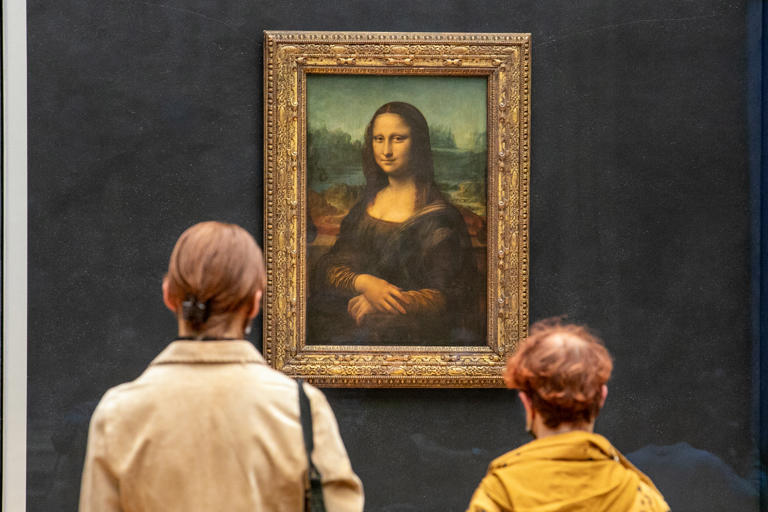
- Share full article
For more audio journalism and storytelling, download New York Times Audio , a new iOS app available for news subscribers.
The Crackdown on Student Protesters
Columbia university is at the center of a growing showdown over the war in gaza and the limits of free speech..
This transcript was created using speech recognition software. While it has been reviewed by human transcribers, it may contain errors. Please review the episode audio before quoting from this transcript and email [email protected] with any questions.
[TRAIN SCREECHING]
Well, you can hear the helicopter circling. This is Asthaa Chaturvedi. I’m a producer with “The Daily.” Just walked out of the 116 Street Station. It’s the main station for Columbia’s Morningside Heights campus. And it’s day seven of the Gaza solidarity encampment, where a hundred students were arrested last Thursday.
So on one side of Broadway, you see camera crews. You see NYPD officers all lined up. There’s barricades, steel barricades, caution tape. This is normally a completely open campus. And I’m able to — all members of the public, you’re able to walk through.
[NON-ENGLISH SPEECH]
Looks like international media is here.
Have your IDs out. Have your IDs out.
Students lining up to swipe in to get access to the University. ID required for entry.
Swipe your ID, please.
Hi, how are you, officer? We’re journalists with “The New York Times.”
You’re not going to get in, all right? I’m sorry.
Hi. Can I help please?
Yeah, it’s total lockdown here at Columbia.
Please have your IDs out ready to swipe.
From “The New York Times,” I’m Michael Barbaro. This is “The Daily.” Today, the story of how Columbia University has become the epicenter of a growing showdown between student protesters, college administrators, and Congress over the war in Gaza and the limits of free speech. I spoke with my colleague, Nick Fandos.
[UPBEAT MUSIC]
It’s Thursday, April 25.
Nick, if we rewind the clock a few months, we end up at a moment where students at several of the country’s best known universities are protesting Israel’s response to the October 7 attacks, its approach to a war in Gaza. At times, those protests are happening peacefully, at times with rhetoric that is inflammatory. And the result is that the leaders of those universities land before Congress. But the president of Columbia University, which is the subject we’re going to be talking about today, is not one of the leaders who shows up for that testimony.
That’s right. So the House Education Committee has been watching all these protests on campus. And the Republican Chairwoman decides, I’m going to open an investigation, look at how these administrations are handling it, because it doesn’t look good from where I sit. And the House last winter invites the leaders of several of these elite schools, Harvard, Penn, MIT, and Columbia, to come and testify in Washington on Capitol Hill before Congress.
Now, the President of Columbia has what turns out to be a very well-timed, pre-planned trip to go overseas and speak at an international climate conference. So Minouche Shafik isn’t going to be there. So instead, the presidents of Harvard, and Penn, and MIT show up. And it turned out to be a disaster for these universities.
They were asked very pointed questions about the kind of speech taking place on their campuses, and they gave really convoluted academic answers back that just baffled the committee. But there was one question that really embodied the kind of disconnect between the Committee — And it wasn’t just Republicans, Republicans and Democrats on the Committee — and these college presidents. And that’s when they were asked a hypothetical.
Does calling for the genocide of Jews violate Penn’s rules or code of conduct? Yes or no?
If the speech turns into conduct, it can be harassment.
And two of the presidents, Claudine Gay of Harvard and Elizabeth Magill of the University of Pennsylvania, they’re unwilling to say in this really kind of intense back and forth that this speech would constitute a violation of their rules.
It can be, depending on the context.
What’s the context?
Targeted at an individual. Is it pervasive?
It’s targeted at Jewish students, Jewish individuals. Do you understand your testimony is dehumanizing them?
And it sets off a firestorm.
It does not depend on the context. The answer is yes. And this is why you should resign. These are unacceptable answers across the board.
Members of Congress start calling for their resignations. Alumni are really, really ticked off. Trustees of the University start to wonder, I don’t know that these leaders really have got this under control. And eventually, both of them lose their jobs in a really high profile way.
Right. And as you’ve hinted at, for somewhat peculiar scheduling reasons, Columbia’s President escapes this disaster of a hearing in what has to be regarded as the best timing in the history of the American Academy.
Yeah, exactly. And Columbia is watching all this play out. And I think their first response was relief that she was not in that chair, but also a recognition that, sooner or later, their turn was going to come back around and they were going to have to sit before Congress.
Why were they so certain that they would probably end up before Congress and that this wasn’t a case of completely dodging a bullet?
Well, they remain under investigation by the committee. But also, as the winter wears on, all the same intense protests just continue unabated. So in many ways, Columbia’s like these other campuses. But in some ways, it’s even more intense. This is a university that has both one of the largest Jewish student populations of any of its peers. But it also has a large Arab and Muslim student population, a big Middle Eastern studies program. It has a dual degree program in Tel Aviv.
And it’s a university on top of all that that has a real history of activism dating back to the 1960s. So when students are recruited or choose to come to Columbia, they’re actively opting into a campus that prides itself on being an activist community. It’s in the middle of New York City. It’s a global place. They consider the city and the world, really, like a classroom to Columbia.
In other words, if any campus was going to be a hotbed of protest and debate over this conflict, it was going to be Columbia University.
Exactly. And when this spring rolls around, the stars finally align. And the same congressional committee issues another invitation to Minouche Shafik, Columbia’s President, to come and testify. And this time, she has no excuse to say no.
But presumably, she is well aware of exactly what testifying before this committee entails and is highly prepared.
Columbia knew this moment was coming. They spent months preparing for this hearing. They brought in outside consultants, crisis communicators, experts on anti-Semitism. The weekend before the hearing, she actually travels down to Washington to hole up in a war room, where she starts preparing her testimony with mock questioners and testy exchanges to prep her for this. And she’s very clear on what she wants to try to do.
Where her counterparts had gone before the committee a few months before and looked aloof, she wanted to project humility and competence, to say, I know that there’s an issue on my campus right now with some of these protests veering off into anti-Semitic incidents. But I’m getting that under control. I’m taking steps in good faith to make sure that we restore order to this campus, while allowing people to express themselves freely as well.
So then the day of her actual testimony arrives. And just walk us through how it goes.
The Committee on Education and Workforce will come to order. I note that —
So Wednesday morning rolls around. And President Shafik sits at the witness stand with two of her trustees and the head of Columbia’s new anti-Semitism task force.
Columbia stands guilty of gross negligence at best and at worst has become a platform for those supporting terrorism and violence against the Jewish people.
And right off the bat, they’re put through a pretty humbling litany of some of the worst hits of what’s been happening on campus.
For example, just four days after the harrowing October 7 attack, a former Columbia undergraduate beat an Israeli student with a stick.
The Republican Chairwoman of the Committee, Virginia Foxx, starts reminding her that there was a student who was actually hit with a stick on campus. There was another gathering more recently glorifying Hamas and other terrorist organizations, and the kind of chants that have become an everyday chorus on campus, which many Jewish students see as threatening. But when the questioning starts, President Shafik is ready. One of the first ones she gets is the one that tripped up her colleagues.
Does calling for the genocide of Jews violate Columbia’s code of conduct, Mr. Greenwald?
And she answers unequivocally.
Dr. Shafik?
Yes, it does.
And, Professor —
That would be a violation of Columbia’s rules. They would be punished.
As President of Columbia, what is it like when you hear chants like, by any means necessary or Intifada Revolution?
I find those chants incredibly distressing. And I wish profoundly that people would not use them on our campus.
And in some of the most interesting exchanges of the hearing, President Shafik actually opens Columbia’s disciplinary books.
We have already suspended 15 students from Columbia. We have six on disciplinary probation. These are more disciplinary actions that have been taken probably in the last decade at Columbia. And —
She talks about the number of students that have been suspended, but also the number of faculty that she’s had removed from the classroom that are being investigated for comments that either violate some of Columbia’s rules or make students uncomfortable. One case in particular really underscores this.
And that’s of a Middle Eastern studies professor named Joseph Massad. He wrote an essay not long after Hamas invaded Israel and killed 1,200 people, according to the Israeli government, where he described that attack with adjectives like awesome. Now, he said they’ve been misinterpreted, but a lot of people have taken offense to those comments.
Ms. Stefanik, you’re recognized for five minutes.
Thank you, Chairwoman. I want to follow up on my colleague, Rep Walberg’s question regarding Professor Joseph Massad. So let me be clear, President —
And so Representative Elise Stefanik, the same Republican who had tripped up Claudine Gay of Harvard and others in the last hearing, really starts digging in to President Shafik about these things at Columbia.
He is still Chair on the website. So has he been terminated as Chair?
Congresswoman, I —
And Shafik’s answers are maybe a little surprising.
— before getting back to you. I can confirm —
I know you confirmed that he was under investigation.
Yes, I can confirm that. But I —
Did you confirm he was still the Chair?
He says that Columbia is taking his case seriously. In fact, he’s under investigation right now.
Well, let me ask you this.
I need to check.
Will you make the commitment to remove him as Chair?
And when Stefanik presses her to commit to removing him from a campus leadership position —
I think that would be — I think — I would — yes. Let me come back with yes. But I think I — I just want to confirm his current status before I write —
We’ll take that as a yes, that you will confirm that he will no longer be chair.
Shafik seems to pause and think and then agree to it on the spot, almost like she is making administrative decisions with or in front of Congress.
Now, we did some reporting after the fact. And it turns out the Professor didn’t even realize he was under investigation. So he’s learning about this from the hearing too. So what this all adds up to, I think, is a performance so in line with what the lawmakers themselves wanted to hear, that at certain points, these Republicans didn’t quite know what to do with it. They were like the dog that caught the car.
Columbia beats Harvard and UPenn.
One of them, a Republican from Florida, I think at one point even marvelled, well, you beat Harvard and Penn.
Y’all all have done something that they weren’t able to do. You’ve been able to condemn anti-Semitism without using the phrase, it depends on the context. But the —
So Columbia’s president has passed this test before this committee.
Yeah, this big moment that tripped up her predecessors and cost them their jobs, it seems like she has cleared that hurdle and dispatched with the Congressional committee that could have been one of the biggest threats to her presidency.
Without objection, there being no further business, the committee stands adjourned. [BANGS GAVEL]
But back on campus, some of the students and faculty who had been watching the hearing came away with a very different set of conclusions. They saw a president who was so eager to please Republicans in Congress that she was willing to sell out some of the University’s students and faculty and trample on cherished ideas like academic freedom and freedom of expression that have been a bedrock of American higher education for a really long time.
And there was no clearer embodiment of that than what had happened that morning just as President Shafik was going to testify before Congress. A group of students before dawn set up tents in the middle of Columbia’s campus and declared themselves a pro-Palestinian encampment in open defiance of the very rules that Dr. Shafik had put in place to try and get these protests under control.
So these students in real-time are beginning to test some of the things that Columbia’s president has just said before Congress.
Exactly. And so instead of going to celebrate her successful appearance before Congress, Shafik walks out of the hearing room and gets in a black SUV to go right back to that war room, where she’s immediately confronted with a major dilemma. It basically boils down to this, she had just gone before Congress and told them, I’m going to get tough on these protests. And here they were. So either she gets tough and risks inflaming tension on campus or she holds back and does nothing and her words before Congress immediately look hollow.
And what does she decide?
So for the next 24 hours, she tries to negotiate off ramps. She consults with her Deans and the New York Police Department. And it all builds towards an incredibly consequential decision. And that is, for the first time in decades, to call the New York City Police Department onto campus in riot gear and break this thing up, suspend the students involved, and then arrest them.
To essentially eliminate this encampment.
Eliminate the encampment and send a message, this is not going to be tolerated. But in trying to quell the unrest, Shafik actually feeds it. She ends up leaving student protesters and the faculty who support them feeling betrayed and pushes a campus that was already on edge into a full blown crisis.
[SLOW TEMPO MUSIC]
After the break, what all of this has looked like to a student on Columbia’s campus. We’ll be right back.
[PHONE RINGS]
Is this Isabella?
Yes, this is she.
Hi, Isabella. It’s Michael Barbaro from “The Daily.”
Hi. Nice to meet you.
Earlier this week, we called Isabella Ramírez, the Editor in Chief of Columbia’s undergraduate newspaper, “The Columbia Daily Spectator,” which has been closely tracking both the protests and the University’s response to them since October 7.
So, I mean, in your mind, how do we get to this point? I wonder if you can just briefly describe the key moments that bring us to where we are right now.
Sure. Since October 7, there has certainly been constant escalation in terms of tension on campus. And there have been a variety of moves that I believe have distanced the student body, the faculty, from the University and its administration, specifically the suspension of Columbia’s chapters of Students for Justice in Palestine and Jewish Voice for Peace. And that became a huge moment in what was characterized as suppression of pro-Palestinian activism on campus, effectively rendering those groups, quote, unquote, unauthorized.
What was the college’s explanation for that?
They had cited in that suspension a policy which states that a demonstration must be approved within a certain window, and that there must be an advance notice, and that there’s a process for getting an authorized demonstration. But the primary point was this policy that they were referring to, which we later reported, was changed before the suspension.
So it felt a little ad hoc to people?
Yes, it certainly came as a surprise, especially at “Spectator.” We’re nerds of the University in the sense that we are familiar with faculty and University governance. But even to us, we had no idea where this policy was coming from. And this suspension was really the first time that it entered most students’ sphere.
Columbia’s campus is so known for its activism. And so in my time of being a reporter, of being an editor, I’ve overseen several protests. And I’ve never seen Columbia penalize a group for, quote, unquote, not authorizing a protest. So that was certainly, in our minds, unprecedented.
And I believe part of the justification there was, well, this is a different time. And I think that is a reasonable thing to say. But I think a lot of students, they felt it was particularly one-sided, that it was targeting a specific type of speech or a specific type of viewpoint. Although, the University, of course, in its explicit policies, did not outline, and was actually very explicit about not targeting specific viewpoints —
So just to be super clear, it felt to students — and it sounds like, journalistically, it felt to you — that the University was coming down in a uniquely one-sided way against students who were supporting Palestinian rights and may have expressed some frustrations with Israel in that moment.
Yes. Certainly —
Isabella says that this was just the beginning of a really tense period between student protesters and the University. After those two student groups were suspended, campus protests continued. Students made a variety of demands. They asked that the University divest from businesses that profit from Israel’s military operations in Gaza. But instead of making any progress, the protests are met with further crackdown by the University.
And so as Isabella and her colleagues at the college newspaper see it, there’s this overall chilling effect that occurs. Some students become fearful that if they participate in any demonstrations, they’re going to face disciplinary action. So fast forward now to April, when these student protesters learned that President Shafik is headed to Washington for her congressional testimony. It’s at this moment that they set out to build their encampment.
I think there was obviously a lot of intention in timing those two things. I think it’s inherently a critique on a political pressure and this congressional pressure that we saw build up against, of course, Claudine Gay at Harvard and Magill at UPenn. So I think a lot of students and faculty have been frustrated at this idea that there are not only powers at the University that are dictating what’s happening, but there are perhaps external powers that are also guiding the way here in terms of what the University feels like it must do or has to do.
And I think that timing was super crucial. Having the encampment happen on the Wednesday morning of the hearing was an incredible, in some senses, interesting strategy to direct eyes to different places.
All eyes were going to be on Shafik in DC. But now a lot of eyes are on New York. The encampment is set up in the middle of the night slash morning, prior to the hearing. And so what effectively happens is they caught Shafik when she wasn’t on campus, when a lot of senior administration had their resources dedicated to supporting Shafik in DC.
And you have all of those people not necessarily out of commission, but with their focus elsewhere. So the encampment is met with very little resistance at the beginning. There were public safety officers floating around and watching. But at the very beginning hours, I think there was a sense of, we did it.
[CHANTING]: Disclose! Divest! We will not stop! We will not rest. Disclose! Divest! We will not stop!
It would be quite surprising to anybody and an administrator to now suddenly see dozens of tents on this lawn in a way that I think very purposely puts an imagery of, we’re here to stay. As the morning evolved and congressional hearings continued —
Minouche Shafik, open your eyes! Use of force, genocide!
Then we started seeing University delegates that were coming to the encampment saying, you may face disciplinary action for continuing to be here. I think that started around almost — like 9:00 or 10:00 AM, they started handing out these code of conduct violation notices.
Hell no! Hell no! Hell no!
Then there started to be more public safety action and presence. So they started barricading the entrances. The day progressed, there was more threat of discipline. The students became informed that if they continue to stay, they will face potential academic sanctions, potential suspension.
The more they try to silence us, the louder we will be! The more they —
I think a lot of people were like, OK, you’re threatening us with suspension. But so what?
This is about these systems that Minouche Shafik, that the Board of Trustees, that Columbia University is complicit in.
What are you going to do to try to get us out of here? And that was, obviously, promptly answered.
This is the New York State Police Department.
We will not stop!
You are attempting participate in an unauthorized encampment. You will be arrested and charged with trespassing.
My phone blew up, obviously, from the reporters, from the editors, of saying, oh my god, the NYPD is on our campus. And as soon as I saw that, I came out. And I saw a huge crowd of students and affiliates on campus watching the lawns. And as I circled around that crowd, I saw the last end of the New York Police Department pulling away protesters and clearing out the last of the encampment.
[CHANTING]: We love you! We will get justice for you! We see you! We love you! We will get justice for you! We see you! We love you! We will get justice for you! We see you! We love you! We will get justice for you!
It was something truly unimaginable, over 100 students slash other individuals are arrested from our campus, forcefully removed. And although they were suspended, there was a feeling of traumatic event that has just happened to these students, but also this sense of like, OK, the worst of the worst that could have happened to us just happened.
And for those students who maybe couldn’t go back to — into campus, now all of their peers, who were supporters or are in solidarity, are — in some sense, it’s further emboldened. They’re now not just sitting on the lawns for a pro-Palestinian cause, but also for the students, who have endured quite a lot.
So the crackdown, sought by the president and enforced by the NYPD, ends up, you’re saying, becoming a galvanizing force for a broader group of Columbia students than were originally drawn to the idea of ever showing up on the center of campus and protesting?
Yeah, I can certainly speak to the fact that I’ve seen my own peers, friends, or even acquaintances, who weren’t necessarily previously very involved in activism and organizing efforts, suddenly finding themselves involved.
Can I — I just have a question for you, which is all journalism, student journalism or not student journalism, is a first draft of history. And I wonder if we think of this as a historic moment for Columbia, how you imagine it’s going to be remembered.
Yeah, there is no doubt in my mind that this will be a historic moment for Colombia.
I think that this will be remembered as a moment in which the fractures were laid bare. Really, we got to see some of the disunity of the community in ways that I have never really seen it before. And what we’ll be looking to is, where do we go from here? How does Colombia repair? How do we heal from all of this? so That is the big question in terms of what will happen.
Nick, Isabella Ramírez just walked us through what this has all looked like from the perspective of a Columbia student. And from what she could tell, the crackdown ordered by President Shafik did not quell much of anything. It seemed, instead, to really intensify everything on campus. I’m curious what this has looked like for Shafik.
It’s not just the students who are upset. You have faculty, including professors, who are not necessarily sympathetic to the protesters’ view of the war, who are really outraged about what Shafik has done here. They feel that she’s crossed a boundary that hasn’t been crossed on Columbia’s campus in a really long time.
And so you start to hear things by the end of last week like censure, no confidence votes, questions from her own professors about whether or not she can stay in power. So this creates a whole new front for her. And on top of it all, as this is going on, the encampment itself starts to reform tent-by-tent —
— almost in the same place that it was. And Shafik decides that the most important thing she could do is to try and take the temperature down, which means letting the encampment stand. Or in other words, leaning in the other direction. This time, we’re going to let the protesters have their say for a little while longer.
The problem with that is that, over the weekend, a series of images start to emerge from on campus and just off of it of some really troubling anti-Semitic episodes. In one case, a guy holds up a poster in the middle of campus and points it towards a group of Jewish students who are counter protesting. And it says, I’m paraphrasing here, Hamas’ next targets.
I saw an image of that. What it seemed to evoke was the message that Hamas should murder those Jewish students. That’s the way the Jewish students interpreted it.
It’s a pretty straightforward and jarring statement. At the same time, just outside of Columbia’s closed gates —
Stop killing children!
— protestors are showing up from across New York City. It’s hard to tell who’s affiliated with Columbia, who’s not.
Go back to Poland! Go back to Poland!
There’s a video that goes viral of one of them shouting at Jewish students, go back to Poland, go back to Europe.
In other words, a clear message, you’re not welcome here.
Right. In fact, go back to the places where the Holocaust was committed.
Exactly. And this is not representative of the vast majority of the protesters in the encampment, who mostly had been peaceful. They would later hold a Seder, actually, with some of the pro-Palestinian Jewish protesters in their ranks. But those videos are reaching members of Congress, the very same Republicans that Shafik had testified in front of just a few days before. And now they’re looking and saying, you have lost control of your campus, you’ve turned back on your word to us, and you need to resign.
They call for her outright resignation over this.
That’s right. Republicans in New York and across the country began to call for her to step down from her position as president of Columbia.
So Shafik’s dilemma here is pretty extraordinary. She has set up this dynamic where pleasing these members of Congress would probably mean calling in the NYPD all over again to sweep out this encampment, which would mean further alienating and inflaming students and faculty, who are still very upset over the first crackdown. And now both ends of this spectrum, lawmakers in Washington, folks on the Columbia campus, are saying she can’t lead the University over this situation before she’s even made any fateful decision about what to do with this second encampment. Not a good situation.
No. She’s besieged on all sides. For a while, the only thing that she can come up with to offer is for classes to go hybrid for the remainder of the semester.
So students who aren’t feeling safe in this protest environment don’t necessarily have to go to class.
Right. And I think if we zoom out for a second, it’s worth bearing in mind that she tried to choose a different path here than her counterparts at Harvard or Penn. And after all of this, she’s kind of ended up in the exact same thicket, with people calling for her job with the White House, the Mayor of New York City, and others. These are Democrats. Maybe not calling on her to resign quite yet, but saying, I don’t know what’s going on your campus. This does not look good.
That reality, that taking a different tack that was supposed to be full of learnings and lessons from the stumbles of her peers, the fact that didn’t really work suggests that there’s something really intractable going on here. And I wonder how you’re thinking about this intractable situation that’s now arrived on these college campuses.
Well, I don’t think it’s just limited to college campuses. We have seen intense feelings about this conflict play out in Hollywood. We’ve seen them in our politics in all kinds of interesting ways.
In our media.
We’ve seen it in the media. But college campuses, at least in their most idealized form, are something special. They’re a place where students get to go for four years to think in big ways about moral questions, and political questions, and ideas that help shape the world they’re going to spend the rest of their lives in.
And so when you have a question that feels as urgent as this war does for a lot of people, I think it reverberates in an incredibly intense way on those campuses. And there’s something like — I don’t know if it’s quite a contradiction of terms, but there’s a collision of different values at stake. So universities thrive on the ability of students to follow their minds and their voices where they go, to maybe even experiment a little bit and find those things.
But there are also communities that rely on people being able to trust each other and being able to carry out their classes and their academic endeavors as a collective so they can learn from one another. So in this case, that’s all getting scrambled. Students who feel strongly about the Palestinian cause feel like the point is disruption, that something so big, and immediate, and urgent is happening that they need to get in the faces of their professors, and their administrators, and their fellow students.
Right. And set up an encampment in the middle of campus, no matter what the rules say.
Right. And from the administration’s perspective, they say, well, yeah, you can say that and you can think that. And that’s an important process. But maybe there’s some bad apples in your ranks. Or though you may have good intentions, you’re saying things that you don’t realize the implications of. And they’re making this environment unsafe for others. Or they’re grinding our classes to a halt and we’re not able to function as a University.
So the only way we’re going to be able to move forward is if you will respect our rules and we’ll respect your point of view. The problem is that’s just not happening. Something is not connecting with those two points of view. And as if that’s not hard enough, you then have Congress and the political system with its own agenda coming in and putting its thumb on a scale of an already very difficult situation.
Right. And at this very moment, what we know is that the forces that you just outlined have created a dilemma, an uncertainty of how to proceed, not just for President Shafik and the students and faculty at Columbia, but for a growing number of colleges and universities across the country. And by that, I mean, this thing that seemed to start at Columbia is literally spreading.
Absolutely. We’re talking on a Wednesday afternoon. And these encampments have now started cropping up at universities from coast-to-coast, at Harvard and Yale, but also at University of California, at the University of Texas, at smaller campuses in between. And at each of these institutions, there’s presidents and deans, just like President Shafik at Columbia, who are facing a really difficult set of choices. Do they call in the police? The University of Texas in Austin this afternoon, we saw protesters physically clashing with police.
Do they hold back, like at Harvard, where there were dramatic videos of students literally running into Harvard yard with tents. They were popping up in real-time. And so Columbia, really, I think, at the end of the day, may have kicked off some of this. But they are now in league with a whole bunch of other universities that are struggling with the same set of questions. And it’s a set of questions that they’ve had since this war broke out.
And now these schools only have a week or two left of classes. But we don’t know when these standoffs are going to end. We don’t know if students are going to leave campus for the summer. We don’t know if they’re going to come back in the fall and start protesting right away, or if this year is going to turn out to have been an aberration that was a response to a really awful, bloody war, or if we’re at the beginning of a bigger shift on college campuses that will long outlast this war in the Middle East.
Well, Nick, thank you very much. Thanks for having me, Michael.
We’ll be right back.
Here’s what else you need to know today. The United Nations is calling for an independent investigation into two mass graves found after Israeli forces withdrew from hospitals in Gaza. Officials in Gaza said that some of the bodies found in the graves were Palestinians who had been handcuffed or shot in the head and accused Israel of killing and burying them. In response, Israel said that its soldiers had exhumed bodies in one of the graves as part of an effort to locate Israeli hostages.
And on Wednesday, Hamas released a video of Hersh Goldberg-Polin, an Israeli-American dual citizen, whom Hamas has held hostage since October 7. It was the first time that he has been shown alive since his captivity began. His kidnapping was the subject of a “Daily” episode in October that featured his mother, Rachel. In response to Hamas’s video, Rachel issued a video of her own, in which she spoke directly to her son.
And, Hersh, if you can hear this, we heard your voice today for the first time in 201 days. And if you can hear us, I am telling you, we are telling you, we love you. Stay strong. Survive.
Today’s episode was produced by Sydney Harper, Asthaa Chaturvedi, Olivia Natt, Nina Feldman, and Summer Thomad, with help from Michael Simon Johnson. It was edited by Devon Taylor and Lisa Chow, contains research help by Susan Lee, original music by Marion Lozano and Dan Powell, and was engineered by Chris Wood. Our theme music is by Jim Brunberg and Ben Landsverk of Wonderly. That’s it for “The Daily.” I’m Michael Barbaro. See you tomorrow.

- April 26, 2024 • 21:50 Harvey Weinstein Conviction Thrown Out
- April 25, 2024 • 40:33 The Crackdown on Student Protesters
- April 24, 2024 • 32:18 Is $60 Billion Enough to Save Ukraine?
- April 23, 2024 • 30:30 A Salacious Conspiracy or Just 34 Pieces of Paper?
- April 22, 2024 • 24:30 The Evolving Danger of the New Bird Flu
- April 19, 2024 • 30:42 The Supreme Court Takes Up Homelessness
- April 18, 2024 • 30:07 The Opening Days of Trump’s First Criminal Trial
- April 17, 2024 • 24:52 Are ‘Forever Chemicals’ a Forever Problem?
- April 16, 2024 • 29:29 A.I.’s Original Sin
- April 15, 2024 • 24:07 Iran’s Unprecedented Attack on Israel
- April 14, 2024 • 46:17 The Sunday Read: ‘What I Saw Working at The National Enquirer During Donald Trump’s Rise’
- April 12, 2024 • 34:23 How One Family Lost $900,000 in a Timeshare Scam
Hosted by Michael Barbaro
Featuring Nicholas Fandos
Produced by Sydney Harper , Asthaa Chaturvedi , Olivia Natt , Nina Feldman and Summer Thomad
With Michael Simon Johnson
Edited by Devon Taylor and Lisa Chow
Original music by Marion Lozano and Dan Powell
Engineered by Chris Wood
Listen and follow The Daily Apple Podcasts | Spotify | Amazon Music
Columbia University has become the epicenter of a growing showdown between student protesters, college administrators and Congress over the war in Gaza and the limits of free speech.
Nicholas Fandos, who covers New York politics and government for The Times, walks us through the intense week at the university. And Isabella Ramírez, the editor in chief of Columbia’s undergraduate newspaper, explains what it has all looked like to a student on campus.
On today’s episode
Nicholas Fandos , who covers New York politics and government for The New York Times
Isabella Ramírez , editor in chief of The Columbia Daily Spectator

Background reading
Inside the week that shook Columbia University .
The protests at the university continued after more than 100 arrests.
There are a lot of ways to listen to The Daily. Here’s how.
We aim to make transcripts available the next workday after an episode’s publication. You can find them at the top of the page.
Research help by Susan Lee .
The Daily is made by Rachel Quester, Lynsea Garrison, Clare Toeniskoetter, Paige Cowett, Michael Simon Johnson, Brad Fisher, Chris Wood, Jessica Cheung, Stella Tan, Alexandra Leigh Young, Lisa Chow, Eric Krupke, Marc Georges, Luke Vander Ploeg, M.J. Davis Lin, Dan Powell, Sydney Harper, Mike Benoist, Liz O. Baylen, Asthaa Chaturvedi, Rachelle Bonja, Diana Nguyen, Marion Lozano, Corey Schreppel, Rob Szypko, Elisheba Ittoop, Mooj Zadie, Patricia Willens, Rowan Niemisto, Jody Becker, Rikki Novetsky, John Ketchum, Nina Feldman, Will Reid, Carlos Prieto, Ben Calhoun, Susan Lee, Lexie Diao, Mary Wilson, Alex Stern, Dan Farrell, Sophia Lanman, Shannon Lin, Diane Wong, Devon Taylor, Alyssa Moxley, Summer Thomad, Olivia Natt, Daniel Ramirez and Brendan Klinkenberg.
Our theme music is by Jim Brunberg and Ben Landsverk of Wonderly. Special thanks to Sam Dolnick, Paula Szuchman, Lisa Tobin, Larissa Anderson, Julia Simon, Sofia Milan, Mahima Chablani, Elizabeth Davis-Moorer, Jeffrey Miranda, Renan Borelli, Maddy Masiello, Isabella Anderson and Nina Lassam.
Nicholas Fandos is a Times reporter covering New York politics and government. More about Nicholas Fandos
Advertisement

IMAGES
VIDEO
COMMENTS
Virtual tours Enjoy the Louvre at home! Online tours. ... Visit the museum rooms and galeries, admire the palace architecture and enjoy the views! From afar. Travelling Materials and Objects. Through materials and objects, this exhibition describes exchanges between distant worlds - exchanges often far more ancient than the explorations of ...
Open to all. The Louvre strives to make the museum accessible to all visitors. Measures are taken to ensure visitors find everything they need in the exhibition rooms and at each step of their itinerary. Visitors with physical disabilities. Visitors with hearing impairments. Visitors with visual impairments.
Ticket. A ticket gives you access to the permanent collections and temporary exhibitions of the Louvre, as well as to the Eugène-Delacroix National Museum the same day and the day after your visit of the Louvre museum. Tickets may be purchased on site when museum attendance is low (subject to availability). Entrance fees. General admission. €22.
Le mardi, c'est le #JourDeFermeture au musée du Louvre ! Dans l'aile Denon, la Victoire de Samothrace trône en haut de l'escalier Daru. ∴ Tuesday is #ClosingDay at the Louvre! In the Denon wing, the Victory de Samothrace takes pride of place at the top of the Daru staircase.
We strongly advise all visitors to book a time slot in advance to guarantee their admission to the museum in case of overcrowding. To prepare your visit, please click here to check our schedule of room closures Entry to the exhibitions 'The Met at the Louvre: Near Eastern Antiquities in Dialogue' (29 February 2024-28 September 2025) ; 'A New Look at Jan Van Eyck: the Madonna of Chancellor ...
Virtual Tour of Louvre Masterpieces. Let's take an online virtual tour of the Louvre, wing by wing. You can see all the must see masterpieces via 360 video tours, YouTube videos, or online tours on the Louvre Website itself. For a lengthy overall YouTube tour of the Louvre, click here.
What kind of tickets/ services can I book online? 2 months ago. Updated. You can book the following services through our website. Museum admission tickets for individual visitors: to visit the Louvre's permanent collections and temporary exhibitions (except exhibitions in the Hall Napoléon) and the Musée National Eugène- Delacroix ...
The Apollon Gallery at the Louvre museum in Paris on Jan. 14, 2020. One of the world's most massive museums has announced an encompassing digitization of its vast collection. "The Louvre is ...
We do not sell concession tickets. The ticket price remains the same for both the permanent collections and temporary exhibitions. However, visitors under the age of 18 (or 26 for EU residents), disabled visitors and job seekers, among others, are entitled to free admission (see full list of visitors entitled to free admission).The following list of visitors are entitled to a reduced rate for ...
Discover the Mona Lisa, the Winged Victory of Samothrace, the Venus de Milo, and other masterpieces of the Louvre with trained guides who take you through the museum's most impressive spaces, such as the medieval moat, giving you a fascinating insight into the history of the palace.. Available languages and times. English; Every day at 9.45 a.m. Additional tour at 2 p.m. on weekends and ...
The Louvre's opening hours are dynamic, welcoming visitors daily except Tuesdays. Explore its vast treasures from 9 a.m. to 6 p.m., with night hours until 9:45 p.m. on Wednesdays and Fridays. Be sure to check for any special closures or changes, ensuring a seamless journey into this iconic cultural haven.
For the first time ever, the entire Louvre collection is available online, whether works are on display in the museum, in storage or on long-term loan in other French institutions. ... Here's why you need to visit this spring. Mar 22, 2023 • 5 min read. Art and Culture. 10 major Paris art exhibitions worth traveling for in 2023. Jan 18 ...
Explore the Louvre online. The Louvre is accessible via collections.louvre.fr. The page is part of the museum's new and improved website that aims to provide a more user-friendly and immersive experience for digital museum visitors. "The Louvre is dusting off its treasures, even the least-known," Jean-Luc Martinez, the President-Director ...
Can I visit the museum for free? Do I have to book tickets? How can I buy a ticket at concession price? Can I buy a ticket without a date? Can I use my ticket to access temporary exhibitions? How much does a guided tour or workshop at the Louvre Museum cost? How much does the audio guide cost? Do I need to book tickets for children?
The Louvre museum in Paris said Friday it has put nearly half a million items from its collection online for the public to visit free of charge. Issued on: 26/03/2021 - 19:09. The Louvre Museum in ...
The Louvre. The Louvre, or the Louvre Museum, is the world's largest art museum and a historic monument in Paris, France. A central landmark of the city, it is located on the Right Bank of the Seine in the city's 1st arrondissement. Approximately 38,000 objects from prehistory to the 21st century are exhibited over an area of 72,735 square metres.
For the first time ever, the Louvre's entire art collection is available to search online. The updated catalogue boasts more than 480,000 entries, from rare items stowed away in storage to the ...
The Collections database consists of entries for more than 500,000 works in the Musée du Louvre and Musée National Eugène-Delacroix. Updated on a daily basis, it is the result of the continuous research and documentation efforts carried out by teams of experts from both museums. ... En autorisant ces services tiers, vous acceptez le dépot ...
And for the best experience, visit the Louvre for the late-night opening: arrive after 6 pm on Wednesdays or Fridays and enjoy the museum up until 9:45 pm. 9. Wear comfortable clothing. Especially, wear comfy shoes. Avoid bringing big bags or backpacks, you won't be able to move as freely as you'd want. 10.
Visitor Tips. Buy your tickets online in advance to avoid long lines. Visit early in the morning or on Wednesday and Friday nights when the museum is less crowded. Wear comfortable shoes and be prepared for a lot of walking. Download the Louvre's official mobile app for an interactive map and comprehensive guide.
We visited the Louvre museum in Paris in under 3 hours. We saw Mona Lisa, Raft of Medusa, Winged Victory of Samothrace, Venus de Milo, Psyche Revived by Cupi...
Les samedis et dimanches à 11h, hors vacances scolaires. Visites en nocturne l es vendredis à 19h toute l'année. Profitez d'une visite loin des foules et venez découvrir les richesses de "l'autre Louvre", de ses espaces à couper le souffle et de ses chefs-d'œuvre méconnus. Voir la visite. En nocturne.
The Louvre museum in Paris received a written note from someone threatening to bomb the Mona Lisa and other valuable works of art, according to Le Figaro's Margaux d'Adhémar. The threat was ...
262K Followers, 61 Following, 2,890 Posts - Louvre Abu Dhabi (@louvreabudhabi) on Instagram: "A universal museum #LouvreAbuDhabi Open Tuesday - Sunday: 10.00 - Midnight Galleries & exhibitions close at 18.30(20.30 on Fri - Sun) Closed on Monday"
The Crackdown on Student Protesters. Columbia University is at the center of a growing showdown over the war in Gaza and the limits of free speech. April 25, 2024, 6:00 a.m. ET. Share full article ...